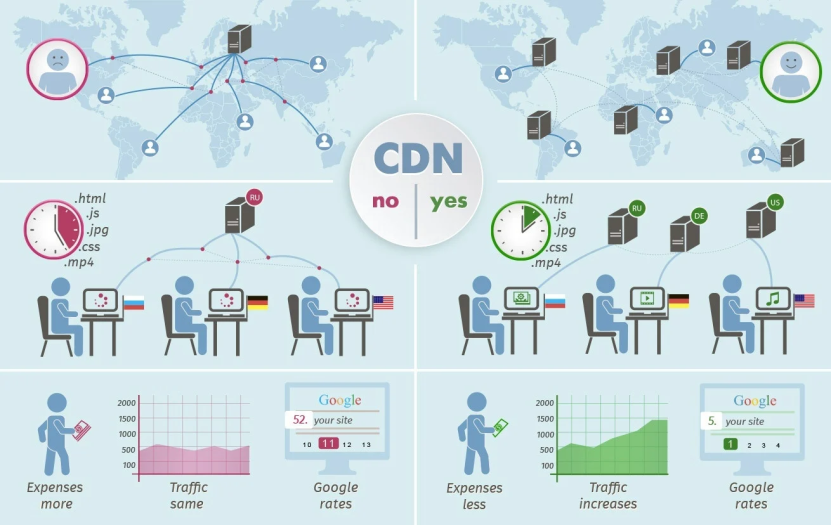Table of Contents
- Chapter 1: It takes an army to start & build a successful eCommerce business
- Managing your product inventory
- 1. Maintain an optimal inventory quantity
- 2. Forecast your demand with data
- 3. Determine your Minimum Stock Levels (MSLs)
- 4. Supplement with dropshipping
- 5. Centralize your inventory management
- Recommended inventory management tools or service
- Shipping strategies and best practices
- 1. Start by establishing a baseline
- 2. Then, raise the minimum order value for free shipping
- 3. Next, test offering free shipping only on products that dominate your sales
- 4. Finally, try combining higher prices with free shipping
- Order fulfillment 101
- 1. Fulfill complete orders manually
- 2. Fulfill part of an order manually
- 3. Fulfill orders automatically
- Recommended fulfillment vendors
- VIP customer service
- Your tools for providing awesome customer service
- 1. Use a friendly tone
- 2. Personalize when possible
- 3. Respond rapidly
- 4. Follow up and solve problems
- Recommended social media monitoring tools
- Live chat
- 1. Carefully time your pop ups
- 2. Integrate the chat window with your design
- 3. Use fewer chats per agent
- Recommended live chat tools
- Help desk
- 1. Customers can self-serve by browsing through common questions
- 2. With common questions and issues addressed, customer support debt is mitigated
- 3. When implemented correctly, helpdesks can become your storefront go-to forum and contact area
- Recommended help desk tools
- Phone
- Recommended virtual phone system tools
- Accounting and taxes
- Recommended accounting and tax tools
- Spying on the competition
- 1. Find what your competitors are ranking for
- 2. Monitor their backlinks
- Recommended tools to monitor competitors’ traffic sources
- Gauging their customer satisfaction
- 1. Google Alerts
- 2. Keyhole
- 3. Amazon reviews
- Monitor pricing and provided value
- 1. Don’t track everything
- 2. Choose competitors you benchmark against carefully
- Magnifying profits with multi-channel marketing
- 1. Prioritize channels based on your customers
- 2. Optimize inventory management
- 3. Optimize for each channel
- Chapter 2 : eCommerce Marketing
- Accurate analytics
- 1. Which channels are driving traffic and sales
- 2. Which websites are linking to you and the volume of traffic they're driving
- 3. Which products sell better
- 4. Which funnel/step has the most “drop-offs”
- Recommended analytics tools
- Engage and profit with email marketing
- Stage 1: Interested
- Stage 2: Engaged
- Stage 3: Lapsed
- Recommended email marketing tools
- Wow customers with user reviews
- 1. Send out friendly emails
- 2. Make it easy to leave a review
- 3. Give customers an incentive
- Recommended user review tools
- Cut through noise with content marketing
- 1. Content goals
- 2. Influencer list
- 3. Buyer persona
- 4. Buyer’s journey
- 5. Content calendar/workflow
- 6. Content distribution (outreach) plan
- Recommended content marketing tools
- Use influencer marketing to skyrocket exposure
- steps to kickstart influencer marketing
- 1. Use the right tools to find the right influencers
- 2. Pitch your influencers
- 3. Track ROI and constantly adapt
- Recommended influencer marketing tools
- steps to kickstart influencer marketing
- Strengthen branding with social media
- 1. Create social media marketing objectives and goals
- 2. Conduct a social media audit
- 3. Select social media networks that match your business
- 4. Measure your ROI
- Recommended social media tools to use
- Scale with paid ads
- Ramp up your remarketing strategies
- 1. Tag all pages on your website
- 2. Customize your remarketing messages
- 3. Upsell and cross-sell
- 4. Maintain a balanced frequency
- Fix your funnel
- Rely on realistic buyer personas
- Segment your audience to make relevant offers
- Set up a conversion tracking pixel
- Combine paid ads with different marketing channels
- Adapt to query vs content based ads
- Recommended paid ad tools
- Chapter 3 : Technical eCommerce
- Offer different payment gateways
- 1. How does this gateway enhance my user checkout experience (UX)?
- 2. Does this gateway integrate with my current platform?
- 3. How does this gateway promise to grow with my business?
- Recommended payment gateways
- Fraud prevention: Why it matters
- 1. Monitor transactions and reconcile bank accounts daily
- 2. Set purchase limits
- 3. Use the Address Verification System (AVS)
- 4. Require the Card Verification Value (CVV)
- 5. Get tougher with password requirements
- 6. Keep platforms and software up-to-date
- Recommended fraud prevention vendors
- Protect customer data with SSL encryptions
- Credit card information
- Increased conversions
- 3rd party payment gateway
- Login forms
- Recommended SSL providers
- Back-end infrastructure
- 1. Reducing HTTP requests
- 2. Reduce bandwidth burden with Gzip files
- 3. Upgrade to a faster hosting
- 4. Use a Content Delivery Network (CDN)
- Recommended infrastructure providers
- Chapter 4 : eCommerce Organization
- Optimizing existing operations
- 1. Carve out your value proposition and let it seep through all customer contact point
- 2. Thoroughly understand your leads
- 3. Use brand-centric marketing that magnetizes your brand and builds strong relationships
- Magnifying profits by measuring your margin
- Customer churn
- Cost Of Goods Sold (COGS)
- Operating costs
- Gross margin
- Customer Lifetime Value (LTV)
- Customer Acquisition Cost (CAC)
- Strengthening your store with hiring the right staff
- VP of growth
- Content managers
- Social media managers
- Conversion rate optimizers
- User experience or interface specialists
- keeping positive cashflow
- 1. Nurture current customers
- 2. Use analytics to refine your spending
- 3. Monitor how returns impact your bottom line
- Product development: Expand your catalog
- 1. Using your list to gather info
- 2. Driving traffic to Kickstarter/crowdfunding
- 3. Interacting with customers on social media
- 4. Harness the power of “ghetto” pre-orders
- Product returns: Don’t let this be your Achilles heel
- 1. Prevent returns from happening in the first place
- 2. Use a simple returns process to boost sales
Introduction
At a glance, starting and growing an eCommerce business seem simple enough.
But the gut-wrenching truth no one is telling you?
It’s not.
We bet the events below sound familiar to you.
Find blockbuster products to sell, validate said products through research and testing. Then decide whether you want to dropship or hold inventory. Next, establish your branding and roll out a website that’s optimized to the teeth to squeeze out sales.
Finally, sit back and bask in the sweet sound of your digital cash registers ringing with “explosive revenue”. Unfortunately - like most success stories - you only hear about the exciting events leading to the success.
Entertaining wins like cracking the code to paid traffic, viral ad campaigns, multiple “hit” products soaring in demand, thousands of new repeat customers, and of course, the eventual explosive revenue rise.
But the boring, “dark” technical details rooted beneath the surface of eCommerce success, the type to undermine your efforts and topple your eCommerce business when underestimated?
You don’t hear about them.
- Who’s going to handle support tickets and deal with grumpy customers?
- How do you strike a balance for popular orders on multiple channels?
- What’s your product returns policy?
- What logistical options satisfy customers without sacrificing profit?
- How is fulfillment/shipping being handled?
- How to manage sales tax?
- If you’re manufacturing from overseas, how do you execute quality control?
- When the business starts to blossom, how are you going to hire your first employees without shooting yourself in the foot?
- After your success, how will you handle shady imitators scrounging for a quick buck off your back?
- How has your online store impacted your brick-and-mortar store?
In today’s post, we’re leaving the shallow “3.5 steps to eCommerce success” behind. What follows is a (realistic) gritty guide on all the dynamic dirty details that culminate into a successful, profitable eCommerce business based on our experience working with hundreds of eCommerce businesses in the last 17 years of our existence.
Be prepared, this is a long read aimed at revealing the truth. We’re going to cover the good, bad, the ugly, and damn right uglier.
By the end, you’ll grasp not just the sensationalized eCommerce fruits, but understand the underlooked branches, trunk, and roots that collaborate to create an eCommerce tree ripe for profitable plucking.
Let’s go!
Chapter 1: It takes an army to start & build a successful eCommerce business
Marshalling your efforts to strengthen one pillar exclusively leads to failure; pillars and sub-pillars are interconnected, sometimes, interdependent. Even neglecting an unimportant sub-pillar can result in a “leaking bucket” type situation.
Because weakness in one pillar destabilizes and stresses others. Which is why sustaining a balanced effort on all three eCommerce pillars, sows the seeds for rapid progression and growth
For example, neglecting everyone’s favorite Saturday morning activity - accounting and taxes - is a recipe for disaster. Yes, poor accounting and taxes invite the tax-man to frisk your pockets and eat your profits. But it also zaps strength from your marketing. How? Because your marketing decisions are now based on skewed sales data and risky revenue numbers that paint a cloudy, inaccurate picture of how your store is truly performing.
Managing your product inventory
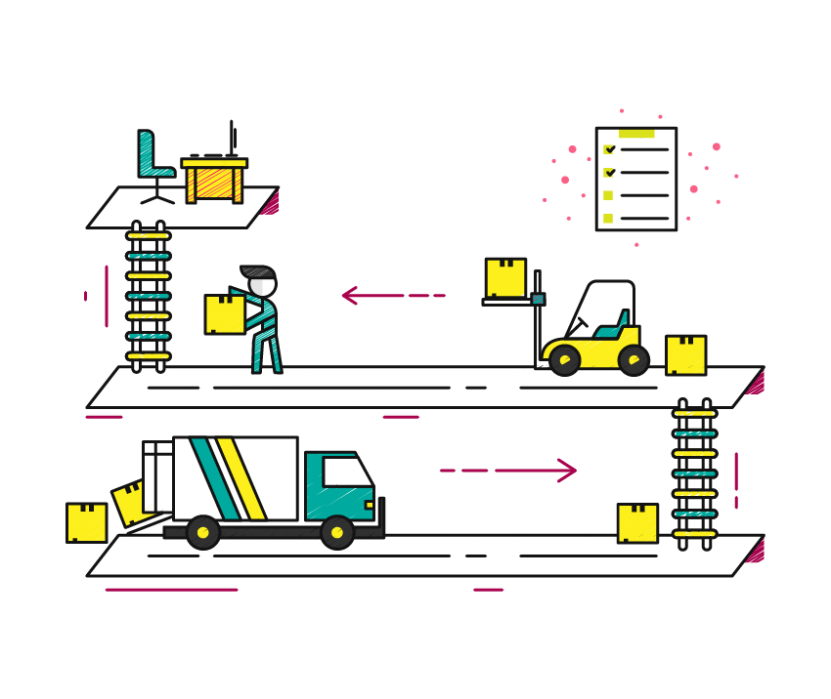
Ask most eCommerce entrepreneurs what their biggest headache is, and they’re apt to answer:
And for good reason, mess it up, and you’ll burn through profits. Beefing up marketing while neglecting inventory management, is a common mistake. It triggers a negative sequence of events that can crumble your business:
Stronger marketing leads to an increase in sales and customers, that’s great. But what if you fail to adapt to the increase in demand and don’t have a grip on the number of stocked products?
Expect painfully long shipping times, a chaotic fulfillment process, dissatisfied customers, and - to kick you while you're down - negative reviews voiced from the sour taste left in customers’ mouths. Focusing disproportionately on marketing without keeping a keen eye on inventory, perpetuates a self-destructive cycle that damages your marketing/customer service.
The very thing you intended to improve.
So, whether you store inventory in a warehouse, your basement, or a physical store, there are essential variables you need to be aware of. You need to:
1. Maintain an optimal inventory quantity
You should have a minimum level of inventory on hand, at all times. When it dips below your predetermined inventory level, it’s time to order more.
Two crucial questions to consider for optimal quantity are:
- What’s the current demand for a product/how fast it is selling?
- How long will it take to refill stock?
This systematizes control over stock; ensuring against overstocking whilst preventing last second panic for more product.
2. Forecast your demand with data
Forecasting demand equips you with the knowledge to tackle seasonal spikes/drops by showing previous sales patterns.
Expecting sales to spike next month? Order extra in advance. Does a big drop in demand seem imminent? Start shifting existing stock while measuring demand. But what if you don’t have past sales data to go off?
You can still anticipate demand, albeit with the cost of accuracy. Without previous sales data, research and trend checking are your best bets. Some go-to’s for trend checking and research are:
- Simply typing in products on Google trends
- Keeping your pulse on trends with Trendwatching
- Social analytics tools to gauge volume of searches for your product
3. Determine your Minimum Stock Levels (MSLs)
You need enough inventory to satisfy demand, but not so much to the point you’re tying up and risking loss of all your capital. That’s why determining your MSL is crucial to proper inventory management and budgeting.
To determine your MSLs, simply revisit your forecasted demand and accommodate for at least 5 days worth of stock to be on standby at any given time.
4. Supplement with dropshipping
Just because you don’t have a dropshipping business, doesn’t mean you can’t use dropshippers to supplement your inventory.
However, don’t just assume your supplier will dropship. Make sure it’s something they offer before integrating in your inventory management. This way, you have a contingency plan if your stocks dwindle unexpectedly. Plus, drop shipping can be used to test new product ideas without causing an inventory nightmare.
5. Centralize your inventory management
Selling solely on a single eCommerce store?
Then centralizing inventory management might not be necessary. But if you sell on multiple marketplaces, multiple sites, or offline, centralizing your inventory to one dedicated system is a must (if you value your time and sanity, anyway).
With inventory management systems, when someone hits “confirm purchase” on their shopping cart, everyone is notified. Who’s that exactly? You, your warehouse, and of course, your supplier.
When the supply of an item drops too low, the supplier gets a heads up to start packing more units and ship them out. The updates to stock levels on all your channels happen in real-time; this process occurs within a matter of seconds.
Recommended inventory management tools or services:
- Sellbrite: Automate listing, syncing, and shipping across all your online sales channels
- ChannelApe: Connect your ERP to multiple sales channels, vendors, and partners quickly and easily
- Quickbooks: Manage your inventory in real time. Keep track of purchase orders, see what is in stock, and reorder from vendors
- Microsoft Dynamics: Enterprise resource planning and customer relationship management applications
- Netsuite: Manage and optimize your global supply chain
- Sage: Track service levels and stock holding, reduce excess inventory, minimize stock-outs and place orders quicker
- MYOB EXO (Integrated in Core dna): Fully integrated financial and businesses management system
- ChannelAdvisor: Integrate, manage and optimize product sales across online channels
- ChannelApe: Connect your ERP to
multiple sales channels, vendors, and partners quickly and easily
Shipping: strategies and best practices
With big name brands like Amazon, Nordstrom, and JCPenney all offering free shipping, people now come to expect it.
In fact, a study by UPS revealed that 79% of consumers felt being charged for shipping was their biggest obstacle when purchasing online. People want free shipping, that’s obvious. But just how much of a difference does free shipping make when persuading people to make a purchase?
Research shows that:
- 93% of people feel free shipping on orders would encourage them to purchase more products online
- 67% of online shoppers stated they purchase items in a store instead of online to avoid shipping costs
- Orders that offer free shipping average 30% higher in value than those that charge
But can you afford to offer free shipping without cannibalizing your profit margins? Decide for yourself with these 4 steps:
1. Start by establishing a baseline
A/B test your conversion rates with and without free shipping. This will highlight your potential for boosting conversions and profit.
2. Then, raise the minimum order value for free shipping
The purpose here is to find the tipping point between bounce and conversion. You’re looking for that sweet spot that’s neither too high or low.
3. Next, test offering free shipping only on products that dominate your sales
Preferably, they’ll also have a low shipping cost. If you sell a wide variety of products, give this step a miss.
4. Finally, try combining higher prices with free shipping
Yes, an increase in price can reduce conversions, but the key here is the total combined net effect of the price increase with the conversion decrease. As your store/products grow and change, so will your shipping strategy. Your main shipping options are:
- Free shipping: Will have a positive impact on conversions. If you're just starting out, and want to offer free shipping, one way is to include the shipping fee in the product prices.
- Charge exact shipping costs
- Flat rate shipping: or flat rates for weight ranges, destinations, or cart totals. Balance your own shipping and handling costs with attractive pricing for your customers.
There’s a plethora of factors that can tally up to extra costs - packaging, total weight, dimensions, the destination of the package - and even your courier. Accurately calculating these factors can spin you into what feels like a “number-crunching coma”.
Fortunately, in Core dna, this is handled automatically.
You can do simple a config such as “free shipping for order above X” to what whttps://hub.coredna.com/docs/global/dxp1-documentation/module-documentation/zone-based-shipping">Zone Based Shipping”.
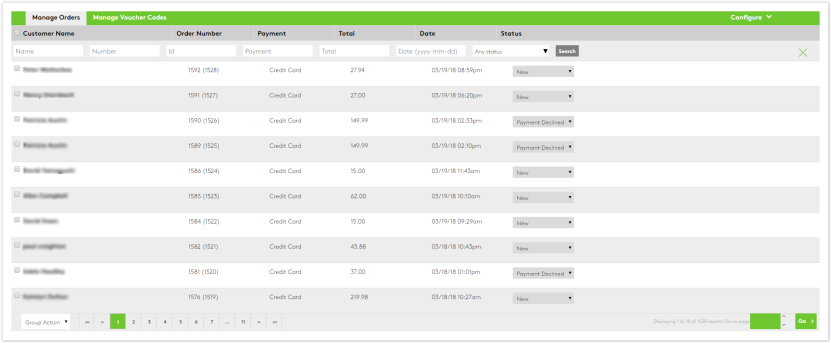
Basically, an automated calculation of shipping costs factoring the way products are packed, carriers, dimensions, locations, drop-off or in-store pickup, and many more.
Shipping calculators to the most popular couriers are listed below so you can begin comparing pricing and options.
- USPS - Shipping Calculator
- Canada Post - Shipping Calculator
- UK Royal Mail - Shipping Calculator
- Australia Post - Shipping Calculator
- UPS - Shipping Calculator
- FedEx - Shipping Calculator
UPS or FedEx tend to be the best option for shipping heavier packages and provide better tracking and delivery guarantees. This is accompanied by higher shipping costs, however.
Dimensional (DIM) weight explained
The rise of Amazon and other eCommerce services revolutionized the volume of business carriers like UPS and FedEx move every day. More boxes taking up more space, but not necessarily weighing more, forcing them to find a new way to generate revenue while keeping shipping costs affordable.
The response was the implementation of Dimensional (DIM) Weight that calculates shipping costs based on the volume (dimensions) of each package. Carriers will determine a DIM weight for each package as well as its standard weight, then apply a formula to each to determine shipping prices. You’re charged the higher of the two prices.
The DIM weight for a specific-sized box is the same regardless of what’s inside, so you might think of it like a flat-rate box as long you’re not shipping something heavy. Here’s another way to think about this:
Let’s say that you sell exercise equipment and you’re shipping a 50 lb. kettlebell to one client and a titanium bike frame to another. Which do you think will cost more to ship?
The kettlebell fits into a 12”x”12”x14” box and applying a standard DIM weight pricing to it, you get a dimensional weight of 15 lbs. for that box. Because the actual weight is higher, you’ll pay a price based on 50 lbs.
But, that titanium bike frame is a different story. It only weighs about 5 pounds, but it requires a much bigger box: 44”x9”x35”. A box of that size has roughly a DIM weight of 100 lbs. You’ll be paying the DIM weight, and it’ll cost you more to ship the bike frame.

There’s a very important change that you need to know about. In 2018, UPS and FedEx started using slightly different calculations based on box size to determine your cost. Red Stag’s Dimensional Weight Calculator is a great tool to help you determine what you’ll pay.
Order fulfillment 101
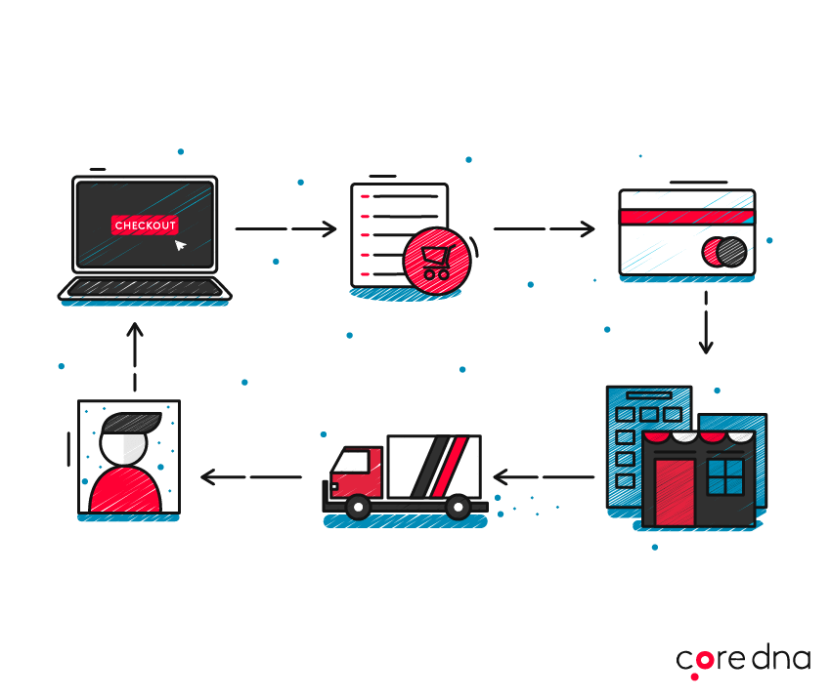
Congratulations, a customer has just ordered! Now for the fun part: getting that order into their hands.
Packaging goods and sending them on their way sounds like a simple logistical task. But for a growing eCommerce business, it becomes a burden that steals time and effort otherwise spent improving different pillars of your eCommerce store.
Common issues you need to address for seamless fulfillment are:
- Where will the magic happen? Your basement, garage, or warehouse?
- You’ll need boxes, envelopes, tape, fille, foam wrap etc. where will you source these? (Uline is a great option for all packaging necessities)
- How will you create and print shipping labels for orders?
- Will you cover fulfillment by yourself, or use a fulfillment service?
- Will you ship every day, or in batches?
You also need to decide whether you want to fulfill orders manually, automatically, or a hybrid of both.
1. Fulfill complete orders manually
This option is best if you:
- Make your products to order
- Have products available for pre-order
- Run out of stock sometimes
- Want the ability to offer customers partial fulfillment without needing to issue a refund.
2. Fulfill part of an order manually
If a customer places an order for multiple products, and some of the products are out of stock or a pre-order, you might want to fulfill only part of the order so its contents can be shipped separately.
3. Fulfill orders automatically
Automatic fulfillment is an effective way to ship your orders if you're:
- Using a fulfillment service or fulfillment app
- Selling digital downloads.
- Are experiencing enough growth to justify it
If you wanted to see the “behind-the-scenes” and the complexity of order fulfillment, we highly suggest reading the “How Order FulFillment Works” guide by Red Stag – it has some cool GIF images.
Recommended fulfillment vendors:
- Red Stag Fulfillment: eCommerce order fulfillment and 3PL services for stores with larger/heavier items
- Shipwire: Order fulfillment services, shipping software, and cloud-based logistics for businesses
- ShipBob: Amazon-level logistics to small to mid-sized businesses
- Fulfillrite: Full-service order fulfillment services. Integrated with the latest platforms, worldwide shipping, real-time order, and inventory data
- FedEx Fulfillment: Integrated supply chain product that utilizes an easy-to-use platform and FedEx’s renowned transportation networks
VIP customer service
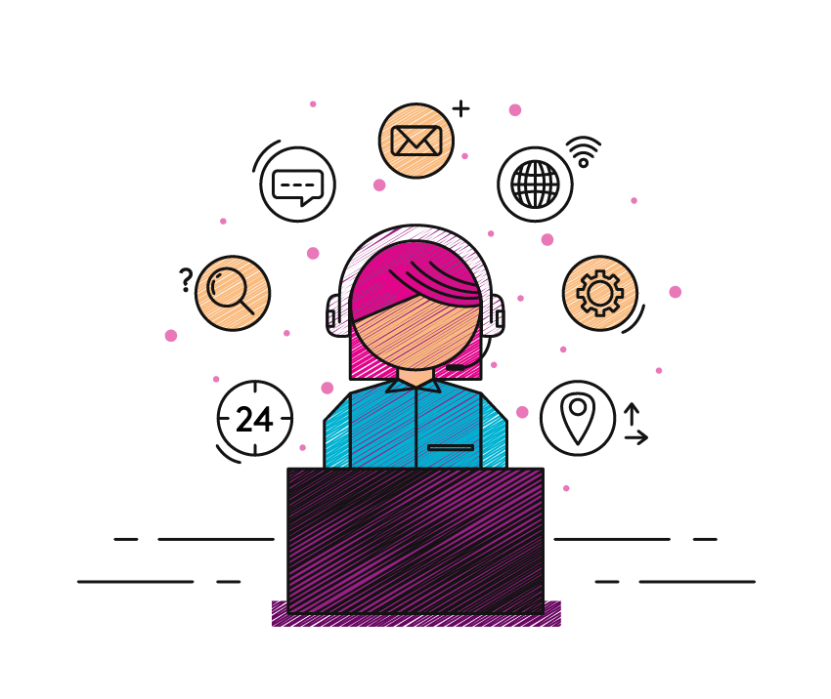
Exceptional service across multiple channels is critical to success in eCommerce.
It allows you to nip misconceptions in the bud, address the needs of varying customers in a professional manner, and deliver something that’s amiss in a lot of businesses - a personal and interactive “human” touch.
The type of touch that catapults you above the competition, reinforces your brand image and inspires undying customer loyalty.
And while the tools used to deliver customer service matter, the philosophy behind that service - which transmits the attitude of your business to customers - is what keeps people coming back. So it’s best to carve a clear, refined customer support philosophy that successfully steers customer relations towards satisfaction and loyalty.
Customer service philosophy: Wowing customers isn’t the only key to loyalty
“Wowing the customer at every contact point!”
A typical response that springs to mind when talking about customer service, right?
According to HBR author Matthew Dixon, phrases like the above are unquestioned, flawed platitudes that might temporarily satisfy or “wow” a customer, but fail to ultimately inspire measurable loyalty. So if going “above and beyond” isn’t the only secret to fierce customer loyalty, what is?

Scrutinizing the links between customer service and loyalty, the Customer Contact Council conducted a study of more than 75,000 people who interacted over the phone through contact-center reps or self-service channels like the web, chat, and email.
Two surprisingly contrary findings came to light:
- Over the top service doesn’t inspire customer loyalty; “reducing their effort—the work they must do to get their problem solved—does.”
- Simplifying the problem-solving process can “improve customer service, reduce customer service costs, and decrease customer churn”.
Out of the 75,000 people studied, 50% complained about:
- Repeatedly having to contact a company
- Being forced to repeat information
- Switching from one service channel to another (switching from email to call)
Weave these insights into your customer service philosophy by prioritizing simplicity. Reduce the time and simplify the effort taken for your customer to reach a solution.
And when reviewing your customer service, don’t isolate satisfaction ratings alone - measure how much effort your customer exerts to resolve a problem. This means considering and making service reps aware of:
- What percentage of customers are switching from one service channel to another?
- How to prevent the team from forcing customers to repeat information they’ve provided?
- How can you keep customer service smooth and streamlined into one channel?
- How long does it take to a resolve a common issue?
Your tools for providing awesome customer service
There’s a plethora of tools and channels you can use to deliver great multi-channel customer service. And the size/type of store you run, often determines which channels and tools will yield better returns.
As a larger store, with a high volume of queries, tackling multiple channels and deploying multiple tools is important. Smaller stores however, might sail smoothly with fewer options. As an eCommerce store, these essential tools/channels will be your backbone:
A public email address or contact form is the default method for letting customers contact you. It’s also the easiest/cheapest way to digitally interact with them.
Whether you publish a contact form on your storefront or use a public email address, the choice is yours. But remember - the less work a customer has to do, the happier they’ll be. Nobody wants to wade through a ton of form fields just to change their item color to “anything but pink”.
Email is also great for reducing customer support debt and gathering data on customers. Frequent questions and problems pouring in? Stick them on an FAQ page.
Customers describing certain items or issues in a specific manner? Their language reveals how they view your product and business and provides insight for product descriptions and copy.
It’s also wise to develop a tracking system for “close” and “open” emails that you’re actively dealing with. Otherwise, your team will spend days digging through an avalanche of emails (and days digging back out).
Social media
More than 50 million small businesses use Facebook to connect with their customers.
Social media's ability to openly address customer queries with a human touch, in a timely, succinct fashion has created a breeding ground for crafting a brand image that both - oozes personality and delivers superb customer service.
In fact, 54% of users surveyed by Twitter report taking action after seeing a brand mentioned in Tweets (actions like visiting their website, searching for the brand, or retweeting content).
Social interaction between consumers and businesses is rising. Customers are no longer shying away from tweeting, poking, and replying to brands - big or small.

But how do you win over customers on social media?
Twitter surveyed over 14,000 users in a six month period to see customer satisfaction levels with brand interactions. The survey garnered 4 key findings applicable to customer service on all social media platforms:
1. Use a friendly tone
Even over a few short sentences, something as simple as tone can go along way. Twitter found that “Consumers are 25% more likely to be satisfied with a brand after a friendly customer service interaction.”
2. Personalize when possible
When consumers have personalized customer service interactions — when a brand includes both the Twitter user’s name, as well as its brand rep’s name — they are 77% more likely to recommend said brand.
3. Respond rapidly
Timing plays a huge role in how customers gauge an interaction with your brand. On average, 60% of consumers expect brands to respond to their requests within an hour.
In reality, brand response times vary from 4 seconds to 221 hours.
Let’s face it, not all problems can be resolved within a couple of interactions, but you can still make customers feel heard. The minimum you can do is reply with a personalized response within 24 hours.
4. Follow up and solve problems
On average, there are five interactions per inquiry between brands and consumers on Twitter. Of those consumers who received a brand response to an inquiry, nearly 30% failed to reach a solution.
Drawing from your customer service philosophy, think about how - from your first point of contact- you’ll deliver a solution to your customer. Will you offer a refund? Next day delivery? Throw in some bonus items?
Endeavour to resolve your customers’ issues from the get-go and you’ll win them over.
Recommended social media monitoring tools:
- Mention: Social listening and media monitoring tool that lets you monitor your brand, protect your reputation, and find influencers on social media
- Brandwatch: Listen to customers and understand consumer trends
- Hootsuite: Manage all of your social media marketing efforts from a single dashboard
- Sendible: Social media management tool for agencies
- Sprout Social: Enterprise social customer support platform to resolve issues, connect with customers and brand advocates
- Reply by Buffer: Social customer service software for support teams
Live chat
The higher the price of a sale, the more resistance there is to buying. In retail stores, staff is at hand to help overcome objections and make the sale. But you don’t have that luxury with eCommerce.
Live chat is the closest thing to having staff members provide live customer support. Its sales boosting potential is irrefutable:
- 62% of customers were more inclined to purchase products online if live customer support is available.
- 38% of customers have said that they have made a purchase due to a good live chat session itself.
- The availability of live chat assistance has been found to decrease sales cart abandonment by up to 30%, which resulted in an increase in sales.
Follow these 3 steps to hit the ground running with live chat:
1. Carefully time your pop ups
If your chat window pops up too late, you risk losing a customer; forever. If it’s too early, you risk looking “pushy” and repelling visitors.
When marketing company Logic fine-tuned their live chat popup timing, their sales soared by 30%.
Scheduling your message/pop up at the appropriate times maintains customer interest in your store. For your initial pop-up, this will require testing. But for future pop ups, you can use triggered messages that appear when customers are having specific problems on your storefront.
2. Integrate the chat window with your design
Making your chat window consistent with your website design makes it less alarming and intrusive; it also helps evoke trust in visitors. Resulting in less friction, and higher conversions.
3. Use fewer chats per agent
Live chat is a powerful customer service tool; if the agents behind the tool are tired or overworked, the quality of your customer service will plummet. This is what Zendesk discovered in their benchmark report:
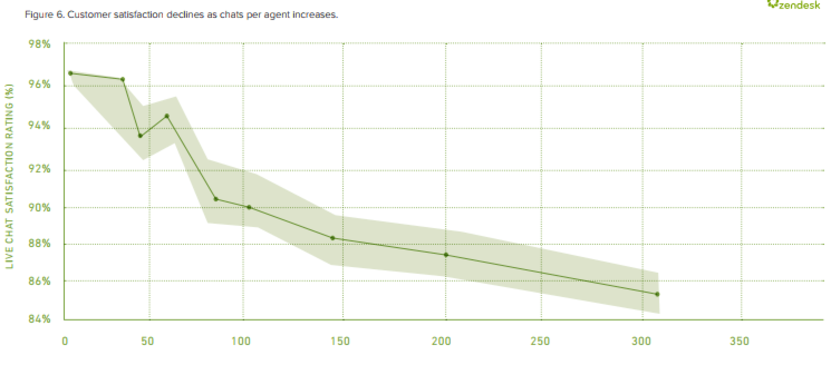
(Customer satisfaction per chat agent | Image source)
As you can see, more chats per agent resulted in lower levels of customer satisfaction.
Zendesk worded this best:
"If you can’t get back to a customer in 30 seconds, you’re probably handling too many chats. That takes a new agent from four chats down to one, and experienced agents from six or seven down to two or three, and a super agent from ten or twelve down to four.
-Zendesk
Recommended live chat tools:
- Drift: Conversation-driven marketing platform
- Live Chat by Sumo: Instantly communicate with customers, prospects & visitors
- Intercom: Manage conversations with leads and customers at scale
- Chaport: Simple live chat for websites
- Crisp: All-in-one solution to communicate with your customers
- HappyFox Chat: Live chat software for websites
- Messengerify: A chat widget powered by Facebook Messenger
- Olark: Live chat for sales, marketing and customer support
Help desk
You know what will kill your team’s productivity? Answering scores of quick-fix questions repeatedly. That’s why online helpdesks are pivotal for providing support.
They provide 3 huge benefits you can’t afford to be without:
1. Customers can self-serve by browsing through common questions
If they are experiencing a recurring issue, they don't have to be placed on hold - resenting the cheery waiting music on the other end. Instead, they’re given control to resolve issues quicker.
2. With common questions and issues addressed, customer support debt is mitigated
Which means your team can invest more time and energy towards bigger issues.
3. When implemented correctly, helpdesks can become your storefront go-to forum and contact area
Acting as buzzing self-serving hubs for questions and solutions where experienced customers can aid newer ones.
Recommended help desk tools:
- Groove: Simple help desk software
- Zendesk: Cloud-based help desk solution
- Freshdesk: Cloud-based customer service software with automation
- Desk by Salesforce: Online customer service software and support ticket help desk application for small business and fast-growing companies
- Help Scout: Collaborative help desk where you can sync your CRM
- Helpy: Simple, open-source helpdesk
Phone
Have you ever left a voicemail for an eCommerce store?
If you answered “never” or “rarely”, then you’re not alone. That being said, this might be changing. Customer service solutions now offer voice products that will take voicemails when you’re offline.
Alternately, you can use a 24-hour live answering service so that customers are always talking to a live human, leaving you free to call back during office hours.
For the best phone service, set designated office hours that customers can call you. If you can, try finding a service provider that acts as a call forwarding and voicemail provider as well. It enables you to learn from your customers (especially early on in a new business), resolves issues faster, builds better rapport, and earn trust for high-priced items.
Recommended virtual phone system tools:
- Grasshopper: Virtual phone system to manage your calls
- Twilio: Programmatically make and receive phone calls and send and receive text messages using API
- Nexmo: APIs for SMS, voice and phone verifications
Accounting and taxes
You’ve got a bald patch from all the head scratching, your desk is a whirlwind of tax forms and accounting papers, and it looks like someone tried to headbutt your wall. This usually means:
It’s that time of year again - accounting and tax time - yay!
Probably the least glamorous eCommerce topic, but undeniably one of the most important. Especially for small businesses who keep their own books; because good luck trying to grow your store with one hand while fighting off the taxman’s dogged pursuit with the other.
As a merchant, you might need to charge taxes on your sales, and then report and remit those taxes to your government. Always check with a local tax authority or a tax accountant to make sure that you’re charging your customers the correct sales tax rates, and to make sure you file and remit taxes correctly.
Pro tip: Each country (and even state) has its own set of laws regarding taxes and accounting, but here are some general tips to nudge you in the right direction:
- Integrate your accounting software with your online store (this feature is integrated in Core dna)
- Record expense and revenue as well as tax-deductible business revenue
- Review your accounts regularly to ensure everything is accurate
Recommended accounting and tax tools:
- Avalara (integrated in Core dna): Automated sales tax software
- TaxJar (integrated in Core dna): Automated sales tax filing for online sellers and merchants
- Quaderno: Calculate taxes, send automatic tax receipts, and create sales tax return-ready reports
- Quickbooks: Online accounting software for small business
- Xero: Manage invoicing, bank
reconciliation, bookkeeping & more
Spying on the competition
In a healthy river, you’re likely to find fresh fish. But in an ebbing one, there’s guaranteed to be less game. The world of eCommerce is similar; highly profitable markets/niches result in robust competition, which is a good thing.
Competition indicates the profit-potential and stability of a market and can be used as a strop to sharpen and strengthen your eCommerce store. But simply reading your competitor’s blog, or scrolling down their social media page doesn’t count as competitive espionage that boosts the profitability of your eCommerce store.
Using information gleaned from your competitors to learn, adapt, and evolve is what gives the insight to mold your store for solid growth.
A great example of wielding a competitive advantage comes from Paperstone. In a business where people default to familiar brands, they’re a small stationery company competing with big names like Staples and Viking.
Despite their relatively small size, they had a distinct advantage over their competitors - lower price. Knowing competitor prices were higher, they placed a comparison table on their homepage contrasting their prices to their competitors’. The results?
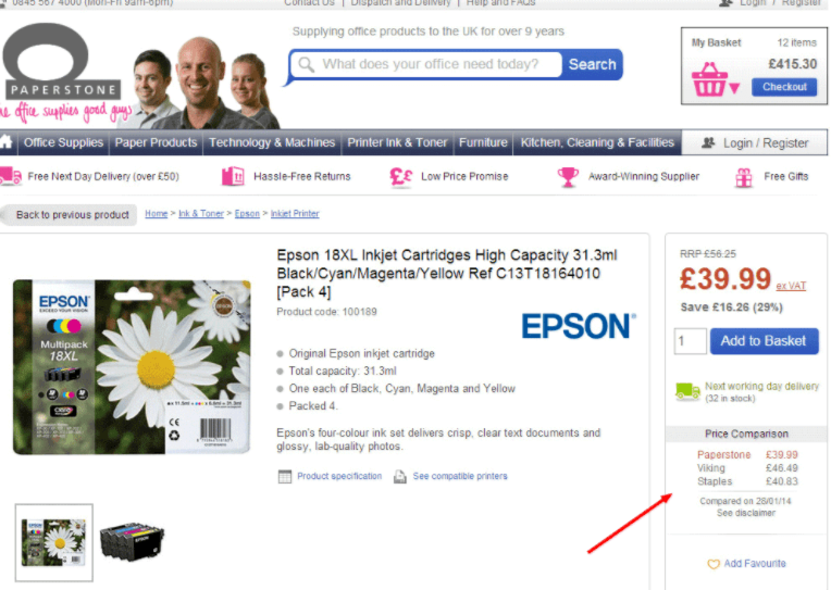
( Paperstone compares their price with Viking and Staples)
Online sales increased by 10.67%. All by simply displaying a competitive advantage. No extravagant promotions, or elaborate ads. Just a table showing how they’re different/better than the competition.
But to show how your store trumps the competition, or learn secrets that give you an edge, you need to understand the competition first. To do that, you need to:
Determine their traffic sources
SEO, paid ads, sponsored content, social media are just a few of the traffic generation methods available for eCommerce. But the secret to finding proven paths to higher traffic, increased conversions, and more sales?
Study your competition. Then replicate and reverse engineer what’s working, adapting it to your store. Here’s how:
1. Find what your competitors are ranking for
You might have exhausted your list of keywords that attract customers, but it doesn’t mean you’ve discovered every single one.
Studying your competitor’s keyword activity inspires keywords to compete for and provides useful data on your customer’s pain/problem via search queries. Allowing you to pluck ripe keywords that are competitive enough to yield organic traffic, but not so much that ranking for them becomes an unattainable goal.
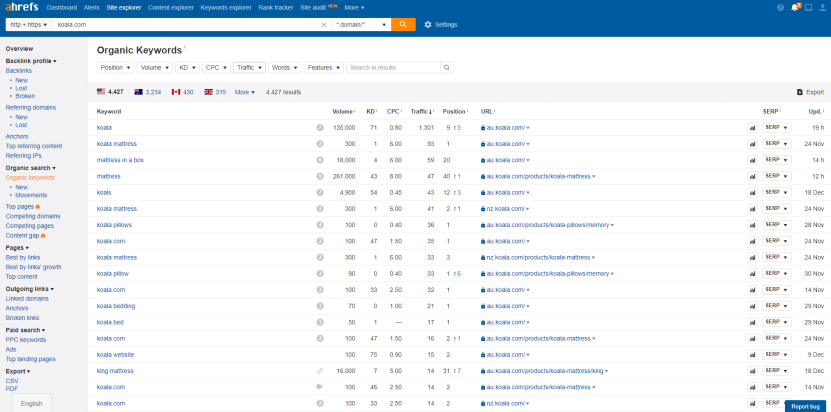
(We’re a big fan of Ahrefs)
By default, Ahrefs sorts the keywords by highest traffic. There will be some branded keywords, which you can exclude after exporting the data.
Ideally, you want to find topics that you can easily rank for without many (if any) backlinks. To do this, you need to look for keywords you’re ALREADY ranking for in the top 3 without any backlinks and find out the average Keyword Difficulty (KD) of those topics or keywords. Now, that you have a benchmark of your average KD, you can prioritize which topics to go after.
2. Monitor their backlinks
Keyword research is a powerful aid but isn’t enough to steal traffic.
Monitoring backlinks are also crucial to forming a strong grasp of your competitor’s traffic strategy. It shows who’s regularly linking to your competition, and reveals what other companies/websites they affiliate with.
You can do this by:
- Setting up alerts every time they get a new backlink
- Setting up alerts every time they get a brand mention
- Finding sites that are linking to a couple of your competitors
- Checking where their homepage is getting backlinks from
Keeping tabs on your competitors' backlinks allow you to look for new opportunities to reach out and promote your content.
If you discover that your competitors generate a high number of quality backlinks by creating infographics, and it’s something you don’t do - you’re now capable of carving a fresh source of untapped traffic previously unavailable to you.
Recommended tools to monitor competitors’ traffic sources:
- Ahrefs: Competitor research tools & SEO backlinks checker
- Moz: Leading SEO tool to track rankings, links & keywords
- Similar Web: Analyze any app or website
- SEMrush: Find your competitors' keywords, backlinks, and ad text
Gauging their customer satisfaction
If your customer has a nagging pain that neither you or your competitors are solving, how would that impact your ability to drum up more business?
By identifying gaps in customer satisfaction/pains in your market, you can enhance all aspects of your eCommerce store. Target ads better, develop magnetic keyword and SEO strategies, curate relevant sweet-spot content, and revamp your copy for maximum effect.
Fortunately, there are a few ways to gauge your competitors’ customers satisfaction levels (besides their possibly biased reviews of course).
1. Google Alerts
Backlinks, social mentions, or keywords, Google alert will track when your competitor is mentioned and deliver the report straight to your inbox.
2. Keyhole
Keyhole is a social media analytics tool that analyzes posts on both Twitter and Instagram. Not only does it give you metrics such as posts, impressions and reach, in-depth metrics like - demographics, share of posts, location - are also available.
3. Amazon reviews
If your competition is on Amazon, customer satisfaction will reflect itself in their reviews. Keep an eye out for the repeated language used by customers. Do people repeatedly complain about packaging? Delivery times? Product longevity? Look for cracks in satisfaction that you can fill.
Monitor pricing and provided value
With over 12 million stores online, everyone is vying for a competitive edge.
Because when you’ve got price-savvy customers that scout for the best value for their money, having the upper hand is necessary for survival.
And that last thing you want is customers leaving your store because you fail to adapt and update the value of your product. That’s why monitoring pricing is important for staying afloat. It helps parry competitors attempts to undercut you.
Tools like Prisync are extremely useful for automated, accurate price monitoring. But to monitor prices in a meaningful manner:
1. Don’t track everything
Choose products responsible for the bulk of your sales to benchmark against competitors.
2. Choose competitors you benchmark against carefully
Before you deem them worthy of comparison, have data and research that proves they’re actually fishing in the same pond as you
Magnifying profits with multi-channel marketing
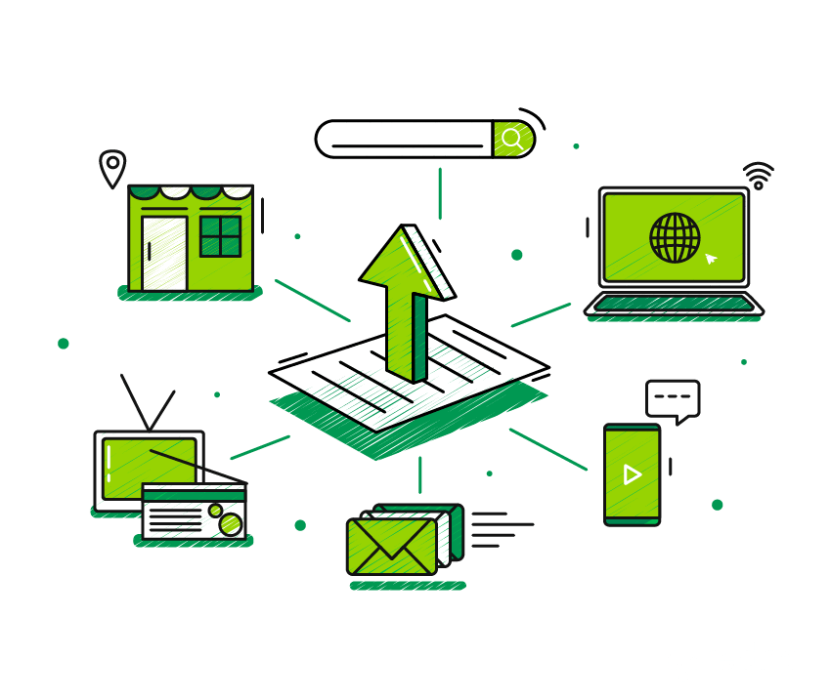
Retailers that sell on two separate online marketplaces see a 190% jump in revenue over those who sell on one, shows research by Stitch Labs.
And in a multi-country survey on the pros of multi-channel marketplaces for a number of companies:
- Almost 75% said that using a multi-channel system increased sales
- 62% said it gave a competitive advantage
- 64% said it boosted customer loyalty
Even Homer Simpson would get it; selling products on multiple channels generates more sales. But how do you execute this while avoiding a logistical and technical nightmare that “burns your wings” and forces sales to crash?
1. Prioritize channels based on your customers
Amazon, Etsy, eBay, they’re the same in the sense that they’re all places to sell products. But as a seller, that’s where the similarities end.
Each channel has its own unique costs, requirements, logistics, and target market.
It’s important to consider these factors before investing in a channel that yields lackluster returns or fails to generate profit at all. Setting up shop on Amazon and being flooded with hundreds of orders for handcrafted items, all for next day prime delivery - doesn’t sound fun, does it?
Select the right channels by asking yourself:
- Does the channel align with your brand or message?
- Are you able to reach your target market there?
- Can you match the delivery times that the channel’s market expects?
- Are margins and payment terms profitable?
- Are you comfortable with the level of control the channel provides?
2. Optimize inventory management
$634 billion is lost by companies every year. The cause?
Out of stock items.
But stocking more product doesn’t seem to counter this either, businesses still lose $472 billion dollars due to overstocking. Working out to a collective $1.1 trillion in lost annual revenue due to poor inventory management.
Your margin for inventory related errors multiplies with each channel you sell on. But with the right planning and tools, you can overcome this without sacrificing profits. Multi-channel selling tools like:
Allow you to integrate inventory while also managing accounting, shipping, and fulfillment. For more on inventory management, check out our inventory management section in this post.
3. Optimize for each channel
Great! You’ve ventured into a fresh channel.
But sales will not shoot up automatically. Because chances are, new marketplace customers will respond differently. That’s why it’s important to test and optimize to wield the best appeal to a specific segment of customers.
Using tools like:
- Consumer surveys
- User testing
- A/B tests
You can gather insights on the type of copy, USP, and images that appeal to customers in each marketplace, and then adapt that to drive more sales.
This type of optimization and testing is what helped propel NastyGal from a basement eBay business, to an iconic multimillion dollar player in the vintage clothing industry. Previous owner Sophia Amoruso keenly A/B tested and constantly optimized thumbnails, copy, design based on feedback and data from her audience.
In her own words:
Rather than dictating what I thought my customers should buy and wear, I listened instead. If I bought something and they hated it, I moved on. Rather than force my idea of what Nasty Gal should be on my customers, I let them tell me along the way.
- Sophia Amoruso
It’s easy to think you know what your customers want, forcing that on them, and actually hurting customer satisfaction. Whether it’s a product headline, new color, or fresh line of products, without data to reinforce your actions, you’re guaranteed to burn profits. So, ensure those important decisions - especially those involving customers - are backed by solid data.
Chapter 2
eCommerce Marketing
The marketing world can feel like a formula 1 race track at times. Everything seems to be moving at breakneck speed and things are always changing. There’s a constant barrage of new strategies and tactics like content marketing, email marketing, SEO, link building and viral marketing.
Each one requiring a complex set of skills to wield effectively. Making it easy for any store owner to feel like he’s sinking in an ocean of information, with 100lb concrete blocks cemented to his feet.
But regardless of the market you’re in - and no matter how much people’s tastes change, or how many new strategies and tactics are released, the goal is the same...
To keep customers pouring into your eCommerce funnel.
So listed below are the essentials of effective eCommerce marketing that fill your funnel.
Start with accurate analytics
You can’t fix gaps in your marketing if you don’t know where the “holes” are.
Identifying weaknesses starts with Analytics. If you have several months worth of data, you can begin to draw some conclusions about how visitors are interacting with your content and/or product.
Here’s an example from the Google analytics menu after clicking the “Conversions” section. Then, selecting “Goals” and “Funnel Visualization.”
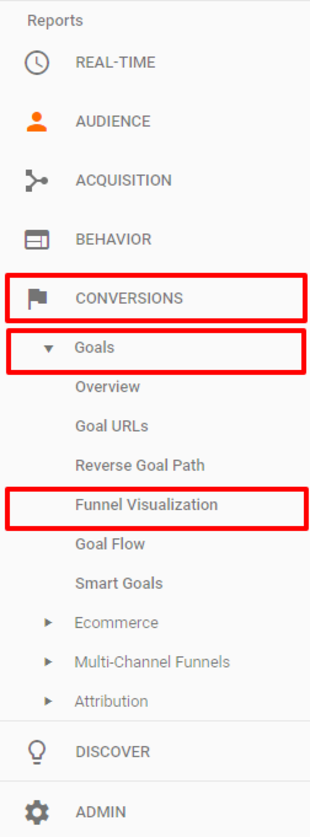
Here you will see a visualized 3-step conversion funnel:
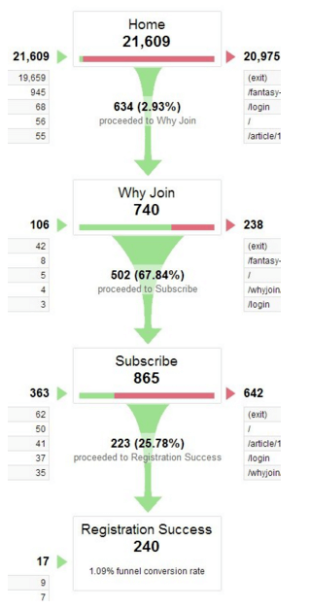
This funnel above is leaking heavily at all stages. So it's clear that there’s room for improvement.
But if this was your eCommerce store, where would you start?
For the best ROI, address the biggest weaknesses first. In this case, the correct answer is the homepage. As only 2.93% of people proceeded to “Why Join”.
When identifying your leaks, consider the following points:
- Start with your biggest, costliest weak links and high traffic pages. Use Google Analytics reports to help you with this.
- Run tests for at least a month.
- Never stop monitoring results and testing. You can always improve.
Analytics provide you with data-driven facts to understand your visitors, crank up conversions, and exponentially improve all your marketing efforts. As well as looking at specific pages, you’re also going to need to use analytics to dig out the following:
1. Which channels are driving traffic and sales
This helps prioritize efforts for the highest ROI channels
2. Which websites are linking to you and the volume of traffic they're driving
Enhances knowledge of your customers and gives insight into highest quantity/quality traffic sources
3. Which products sell better
A great aid in segmenting different products for different customers and personalizing for higher conversions and better customer experience
4. Which funnel/step has the most “drop-offs”
Fixing one or two primary weak links results in huge potential gains.
Quick tip: Implement an analytics health checklist Don’t drown your conversions and ruin analytics with inaccurate information. For clean, accurate data create - or use - a Google Analytics Health checklist to review and optimize your setup.
Recommended analytics tools:
- Heap: Codeless analytics and automated data insights for every online business
- Mixpanel: Product analytics for mobile, web, and beyond
- TruConversion: Find out why your website visitors are leaving
- Segment: Analytics API and customer data platform
- Google Analytics: Freemium web analytics service offered by Google that tracks and reports website traffic
- Hotjar: Heatmaps, visitor recordings, conversion funnels, form analytics, feedback polls and surveys in one platform
- Kissmetrics: Behavioral analytics and engagement platform
Engage and profit with email marketing
“The money’s in the list”.
It’s struck your eardrums for the hundredth time right now, but this platitude is only half-true. A substantial email list isn’t enough; how you nurture and interact with your list - that’s the linchpin for successful email marketing. Spamming subscribers with sales messages is as equally effective as cold-calling people and yelling at them to “buy stuff!”
To squeeze the most returns from their email lists, eCommerce stores and online retailers need to segment, target, and follow up leads at various interest levels.
In other words, you need a solid sales funnel.
Now, a sales funnel can be as complicated and intricate as you want it to be. But here’s a simple rundown of the 3 main stages where leads circulate your eCommerce funnel:
Stage 1: Interested
The early acquisition stage. Where your lead has signed up for a coupon, guide, bonus etc. but hasn’t purchased anything yet. The primary goal of stage 1? Get the customer to sign up.
Stage 2: Engaged
After the initial purchase/purchases, your lead is now at stage 2, they’re engaged. The goal of stage 2? Repeat customers; aiming for higher sales volume per customer. This is where segmenting, promotions, and triggered emails begin to reap revenue-boosting rewards.
Your job doesn't end when your visitors turned into paid customers. One email you should be sending to paid customers is a transactional email. It's crucial for eCommerce marketers to leverage the marketing potential of transactional emails by including content about special promotions, loyalty programs, or general branding such as links to your social media pages.
A lot of marketers make the mistake of sending generic transactional emails, such as simply including the purchase information and call it a day. This would be a big waste as transactional emails tend to have much higher open and engagement rates than other promotional campaigns (yes, even when you use solid segmentations in those campaigns).
Stage 3: Lapsed
If leads aren’t opening emails, and are unresponsive - they’ve lapsed. The goal of stage 3 is to reactivate lapsed leads into buying. Either through a tailored series of abandonment emails, special offers, or simple satisfaction emails (all built-in with Core dna) intended to rekindle their interest.
Actionable takeaway: To ensure that you’re on the right track, map the funnel out. List the stages where leads in your funnel become “interested”, “engaged” and “lapsed”; detailing the content, ads, or messages they’ll encounter at each step/stage. This gives you a comprehensive view of your funnel, making it easier to channel leads further, with less effort.
Recommended email marketing tools:
- MailChimp (integrated in Core dna): Email marketing automation for eCommerce businesses
- Campaign Monitor (integrated in Core dna): Professional-grade email marketing and automation
- Active Campaign: Integrated email marketing, marketing automation, and small business CRM
- Emma: Digital marketing platform to plan design, and optimized targeted email campaigns
- SendX: 360-degree email marketing automation
- Klaviyo: Email marketing tool built for eCommerce and web businesses
Wow customers with user reviews
Your friends drag you out for a Saturday night meal in town, you’re choosing where to eat. “Chinese” is what you’ve decided on. So stomach rumbling, you scan the sea of surrounding restaurants; the waft of mouthwatering food turning that rumble into a growl. There!
Two Chinese restaurants (side-by-side for some odd reason) catch your eye, but you notice something strange:
- Apart from a server expectantly gazing out the store, the left restaurant is still. Its empty chairs neatly tucked under vacant tables topped with perfectly arranged cutlery.
- The restaurant on the right is bustling with activity. A flock of customers giggle on the way out; the cheery clang of plates following them as the door swings shut.
Which restaurant wins your trust?
The right one, obviously.
Without user reviews on your eCommerce store, you are that deserted restaurant on a bustling day in a busy part of town. Your lack of social proof is in itself, negative social proof. And negative social proof crumbles your credibility and pushes potential customers away from your store.

(Online reviews affect their buying decision tremendously | Image source)
Because even though they come from complete strangers, online reviews garner a lot of trusts. 84% of people trust online reviews as much as personal recommendations. And 61% of customers read online reviews before buying. So, how do you attract a high quality and number of reviews that cement your eCommerce store’s credibility?
1. Send out friendly emails
Customers aren’t going to beat a path to your door to leave reviews. Making an effort to collect them is the first step to ramping up your social proof and credibility. But when’s the right time to ask?
After your customer has explored your product enough to benefit from it.
Set an email campaign to trigger 1-2 weeks after purchase. A simple “give me a review” type email won’t suffice. Explain how you value their custom, be gentle, and ask how you can serve them better.
2. Make it easy to leave a review
Do you really need your customer's location? Gender? Age?
These filters may be relevant to your review - most likely not. But, it’s a proven fact, the fewer details people have to fill in, the higher the chance of them actually filling details in. Want to collect a wall of sparkling testimonials and reviews?
Keep the reviewing process simple, customer oriented, and pain-free.
3. Give customers an incentive
Despite spending very little on advertising, Dropbox is worth billions.
They make it really easy for users to tell one another about the product; even giving them incentives. For example, when one person who has Dropbox refers another, they both get a 500MB increase, pending signup. This type of referral system increased Dropbox signups by 60%. And it teaches an important lesson when asking people to leave reviews:
Rewards and incentives are powerful tools for motivating action. Asking for reviews might get you a few responses, but asking for reviews with a gift that’s got your reviewer’s name on it will soar your response rate.
For more authentic and credible reviews, focus on post-purchase - or multiple purchases - incentives. This ensures that you’re not getting reviews for freebies or competition entries. And it removes the suspicion of you crossing the “borderline bribing people” line.
Key takeaway: Offering either a steep discount or free valuable gift to the winner, create a sweepstake to motivate customers to leave you a review. It’s easy to implement and lead to an avalanche of credibility-boosting reviews.
Recommended user review tools:
- Feefo: Collect real reviews and customer insights to boost business and build trust
- Yotpo: All-in-one UGC marketing platform collects and syndicates every type of customer content (reviews, Q&A, photos and more) to increase trust, social proof and sales
- Bazaarvoice: User-generated content marketing solutions
- Trustpilot: Get the real inside story from shoppers. Read, write and share reviews
- Revoo: Talk with, listen to and learn from their customers with reviews, feedback & user-generated content
Cut through noise with content marketing
Consumers don’t even blink at traditional advertising anymore.
They’ll skip YouTube ads, ignore banners online, and trash irrelevant emails.
Research shows that:
- Content marketing costs 62% less than traditional marketing and generates about 3 times as many leads.
- Conversion rates are nearly 6x higher for content marketing adopters than non-adopters (2.9% vs 0.5%).
- In 2014, 57% of marketers reported custom content was their top marketing priority.
Content marketing allows you to combine two essential pieces of the modern marketing puzzle:
- Providing value through educating
- Selling your product/service
But, blindly churning out content (the default “strategy” deployed by most companies) won’t make a dent in your sales. Educating customers, building credibility, and proving yourself as an expert in your market is what turns curious visitors into satisfied customers.
Easy-to-follow videos, brand storytelling, in-depth guides, and detailed charts establish a sense of expertise. Building trust that’s even more vital when selling high-ticket items online. But content marketing isn’t as simple as slapping together a few posts and slamming the publish button, sharing an assortment of podcast interviews on your Twitter, or even recording a YouTube “tour” of your warehouse (for the 50th time).
That’s a surefire way to shoot your content marketing in the foot.
Benji Hyam - from Grow and Convert, explains how he boosted a client’s traffic by 67% from 1 new post, in just two weeks. His takeaway from this success?
Systemizing the process for researching, creating, and promoting content is key.
According to Benji, businesses suck at content marketing because they fail to harness the power of applying system-level thinking to:
- User research: Resulting in narrowing down to an ideal client type
- Content strategy: Producing a piece that hits on this client type’s pain points in a format they’d find genuinely interesting, fun, or useful
- Content promotion: Promoting it strategically in places where the ideal client type already hangs out.”
An airtight action plan and process will keep traffic, leads, and sales pouring in. Here’s what constitutes that plan:
1. Content goals
What’s your long-term content marketing goal? Backlinks, social shares, followers, subscribers? Identifying key metrics to measure your content marketing performance is an absolute must.
2. Influencer list
You’ll need some help with the heavy lifting. Someone with existing authority who shares your audience. “Influencers” are going to be key in this, so you’ll need a list of them. Whether they’re established A-players or the up-and-coming stars of tomorrow, the ability to stand on the shoulders of these digital giants is game-changing.
3. Buyer persona
Who is your ideal client? Where do they hang out online? What are their interests? Buyer personas help fathom who your typical/ideal customer is, and how you’ll serve them; forming and heavily influencing the content you’ll create. Check out this amazing article by Ardath Albee on the process needed for creating comprehensive buyer personas.
4. Buyer’s journey
Typically the buyer’s journey covers three phases: A problem/pain, an interest in solving that problem, and an arising need that pulls towards taking action. At which point will your customer meet your content? And what purpose will it serve? For example, while browsing social media, a customer might click on a helpful piece of content via paid ads. The content not only teaches the customer how to resolve a pain/problem but asks them to subscribe for access to deeper, gated content they’re prone to enjoy - eventually turning an interested click, into an engaged lead.
5. Content calendar/workflow
If you don’t have a content calendar/workflow, that means you don’t have a content marketing plan. Your content marketing is as good as the system it relies on; maintain a fixed schedule to keep yourself focused and keep your audience engaged.
6. Content distribution (outreach) plan
You can create spellbindingly good content, but it’s rendered useless if it doesn’t land in the right hands. Posting to your own site is easy. But you’ll also need to have a target list of external sites/audiences to reach. This can be achieved through syndication, strategic sharing, influencer outreach, and even paid ads.
To effectively compete and deliver the right content to the right customer at the right time, marketers need more than creating one content marketing asset after another; they need a content operation to transform their entire content strategy into a coherent message.
- Paralee Walls, Director of Digital Marketing & Content Operations, Kapost
Actionable takeaway: Get rapid feedback and test your content by following these 3 steps:
- Find your ideal customer type: Who are they? What do they do? And why are they ideal consumers of your product?
- Confirm your content direction: What type of content addresses their pain? List your customer’s top Google searches for the pain they’re trying to solve.
- Scour Facebook groups. With the largest network of groups/people, your ideal customers are most likely socially active on Facebook. Find them, and you’ve got immediate traffic to your content, and potential leads.
Recommended content marketing tools:
- CoSchedule: A complete marketing calendar and social media planning tool
- Trello: Organize anything, together
- Asana: Track your team's work & manage projects
- Kapost: Build and manage a content operation
- GatherContent: Easily organize and produce content for website projects
- Core Teams: Core dna’s end-to-end content flow, calendar, tasks management, and timesheet platform
Use influencer marketing to skyrocket exposure
Ever heard of the pilot fish?
It has an extremely easy way to find food and survive. Simply entering the mouth of a shark, untouched, it feeds on dead skin and ectoparasites. The shark gets cleaned, and the fish gets its food. A win-win situation for both.
To drive more leads to the top of your eCommerce funnel, the same mutually beneficial philosophy is applicable to influencer marketing. Reach out to influencers in your industry whose audience will truly benefit from your product. Then give them a promising offer in exchange for exposure.
Visit any decent sized YouTube gaming channel, and you’ll see their products being promoted/reviewed by big-name YouTubers.
(Unbox Therapy is a big name in the gaming niche)
This allows them to generate brand awareness and boost sales without breaking the bank. Through influencer marketing, they cut through the noise and sit directly in front of ideal customers.
To implement influencer marketing effectively:
- Know the best platform for your audience. Ask yourself “where do people who buy our products hang out?”
- Search for influencers on those platforms with large, active audiences.
- Subscribe to their blogs and channels, interact with their community.
- Ensure your product paints the influencer in a positive light. This only works if your product is a match. Because a large number of people are hanging on their expertise; influencers aren’t going to sacrifice their hard-built reputation for an ill-matching product.
- Make an irrefutable offer. Email the influencer and tell them about your product. Let them test it out. If they like it, their audience will appreciate being introduced to a beneficial product. And if you want to go the extra mile...offer them an incentive for promoting your product. It could be a steep discount just for their audience, or a small commission off each sale etc.
"
As an eCommerce brand, one of the most important things to do is to develop deeper relationships with influencers that drive positive ROI for you. Be creative and come up with unique ways they can continue to drive repeated business to your site.
3 steps to kickstart influencer marketing
Who do you target? How do you reach them? Are they ideal for spreading the word about your product? Finding and persuading influencers can feel overwhelming when starting out. Follow these 3 steps to form a strong, focused start to influencer marketing:
1. Use the right tools to find the right influencers
You need to know which high authority figure's audience overlaps with yours. Fortunately, there are plenty of tools to point you in the right direction. And BuzzSumo is one of the best:
BuzzSumo gives you insight into:
- Which headlines types are popular with your target audience
- Which platforms generate the most shares
- Which Influencers are up-and-comers (by how many followers they have)
- What content structure resonates with your target audience
With metrics on successful topics, thriving social media channels, and key influencers just a few clicks away, identifying influencers - and pitching them your product - can be executed with a high degree of accuracy that yields a solid ROI.
2. Pitch your influencers
Depending on:
- What it is you want them to do,
- The size of their audience,
- The level of engagement.
Paying influencers can be pretty expensive. Prices range between a couple hundred dollars, to hundreds of thousands per post/video/shoutout. Luckily, a popular alternative to paying for engagement is to offer free products for review or provide content.
Now, this probably won’t work with A-level influencers.
Companies constantly bombard the “big boys” with freebies while praying for a positive review. Offering them a percentage of sales or flat rate, however, might pique their interest. B-C level influencers with smaller audiences, on the other hand, will probably respond better to freebies/content in exchange for exposure.
Either way, influencer research is instrumental in laying down an enticing offer on the table.
3. Track ROI and constantly adapt
Traffic rushing in from influencers with beefy social media accounts isn’t enough. You must be able to step back, gather insights based on data, list influencers who generate the highest return, and understand what content resonates with their audience.
Should you offer an in-depth guest post on their blog? Maybe request a review on their YouTube channel? Or perhaps a shoutout on Instagram will drive more business to your eCommerce store?
Each audience responds differently depending on their influencer, content platform, and market. And tracking ROI helps you attack the bigger picture by adapting to each influencer based on hard data.
Recommended influencer marketing tools:
- Speakr: The global influencer network exchange providing brand advocacy, talent management, and social publishing at scale.
- AspireIQ (Formerly Revfluence): Comprehensive influencer search engine and powerful influencer relationship management tools to scale your influencer marketing
- Klear: Build, scale and measure influencer programs from the most comprehensive database of over 1 billion influencers
- Iconosquare: The world's largest Instagram search engine
- Reelio: Connects brands with YouTube, Instagram, and Facebook influencers
- BuzzSumo: Identify the most shared links and key influencers
- Famebit: Find, hire, and work with YouTube influencers
- Open Influence: Creative & data-driven influencer marketing services
- Hypetap: A marketplace for brands, agencies, influencers and talent managers
- T R I B E: Fastest growing self-serve marketplace connecting brands with micro-influencers
- TapInfluence: Influencer marketing technology powered by an opt-in marketplace of content creators, influencers, and real-life program data
- Grapevine: YouTube influencer marketing platform
- Shoutcart: Marketplace to buy and sell Instagram shoutouts
- Upfluence:Influencer marketing campaigns and provide content marketing services tailored to your needs
Strengthen branding with social media
75% of consumers buy something after seeing it on social media. When used correctly, eCommerce retailers can harness social media to generate growth, sales, and a loyal audience.
You can have thousands of fans and followers, but your informative, witty posts will be as effective as a cucumber in a knife fight if the users who see them are uninterested or inactive.
Low-quality followers won't share your posts, care about your content, or drive more sales to your eCommerce store. To snatch up followers that actually appreciate your content, interact with your brand, and drive more business, start by:
Being active where both your target audience and competitors hang out
- Creating a community of insiders. Give people a heads up on promotions, special offers, and events. They’ll be more motivated to follow you that way
- Using sweepstakes and giveaways to generate a buzz and attract traffic
- Actionable step-by-step takeaways:
1. Create social media marketing objectives and goals
Without goals, you have no means of gauging success. These goals should be aligned with your broader marketing strategy so that your social media efforts drive toward your business objectives.
2. Conduct a social media audit
Figure out who is currently connecting with you via social, and how your social media presence compares to your competitors’.
3. Select social media networks that match your business
Success in anything requires focus; social media is no different. Trying to build a thriving audience on every single platform is futile. Instead, focus on the 3 main networks that are best suited for:
- Your industry
- Your audience
- And the content you share
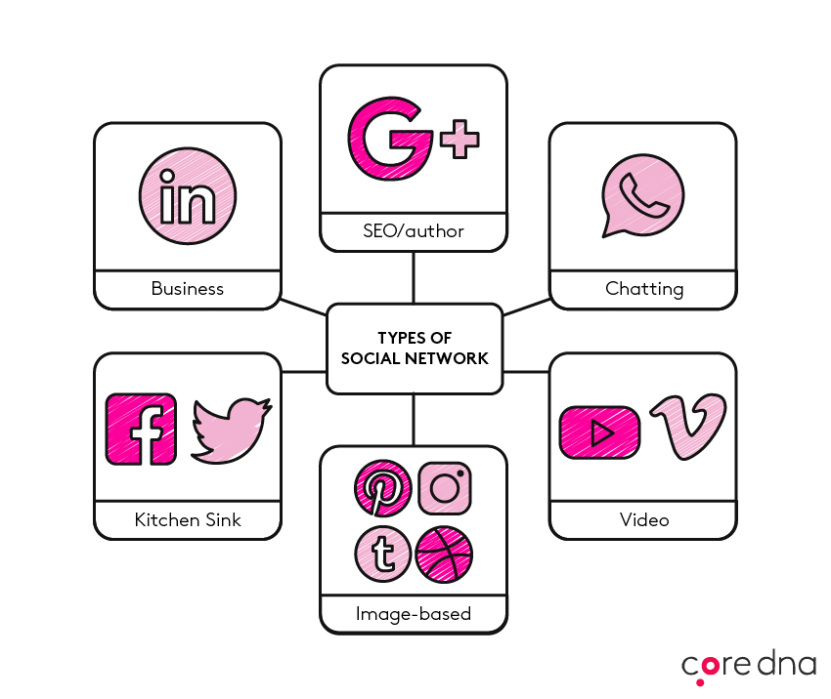
4. Measure your ROI
According to Altimeter, only 34% of businesses feel that their social strategy is connected to their business outcomes. Without tracking, you’re left with blind decisions, uneducated guesses and no plan of action. So how do you go about measuring ROI from social media?
Tie your social media metrics with your marketing goals.
Start by setting goals for each campaign, then track metrics related to those goals. For example, if your goals are to “raise traffic and sales”, keep an eye on your click-through-rates and conversions from your social media traffic sources.
Finally, create meaningful benchmarks so you can analyze your performance and pave the way for constant improvement.
Recommended social media tools to use:
- Later: Schedule and manage your Instagram posts
- PostmastR: Your on-demand social media manager
- Fastory: The leading mobile-first marketing suite
- Buffer: Schedule posts, track the performance of your content and manage all your accounts in one place
- MeetEdgar: Social media scheduling tool that manages itself
- Sprout Social: Communicate with customers on social channels, collaborate across teams and measure the effectiveness of their efforts
- Hootsuite: Manage multiple networks and profiles and measure your campaign results
- PromoRepublic: An automated platform that helps you create, plan, and promote high-quality content on social media
- BRAND24: Keep track of your brand online
- Storyheap: Manage your Snapchat & Instagram Stories
- Holly Social: Experience the power of unlimited social media automation
Scale with paid ads
Facebook ads, Instagram ads, Twitter ads, Google AdWords, Google Display Ads, Google Product Listing Ads, Pinterest ads, Snapchat Ads… the dizzying array of paid ad platforms available seems to undergo cosmological expansion year by year. And there’s a good reason for that. Research shows that:
- Pay-per-click advertising has been proven to have a positive impact on organic click-through rates.
- “For every $1 a business spends on AdWords, they receive $8 in profit through Google Search and AdWords”(Google report)
Despite reassuring research, for many eCommerce store owners “PPC advertising” still triggers memories of confusing number crunching, negative returns, and a dwindling ad budget that’s eating profits.
Like picking a tough lock, breaking into successful paid ads requires systematic alignment of multiple points. The doors to traffic and sales won’t open with just a great USP, image, or killer ad copy. Sure, those features will win click-through rates and boost landing page traffic. But the page isn’t converting, which means you’ve squandered a hard-earned click.
Ramp up your remarketing strategies
By using remarketing and dynamic remarketing, you can get in front of old leads as they browse other sites or apps.
Remarketing - through Facebook, Google, and Instagram - shows past visitors an ad back to your site, encouraging them to come back. Dynamic remarketing levels up traditional remarketing.
It serves past visitors ads which display the exact/similar products they were looking at on your site. So if a customer purchased a lush red dress from your site, they’ll be offered an ad showcasing the perfect heels to match it, with 15% off.
To remarket effectively:
Remarketing isn’t as simple as throwing out ads that link to your store. You’ll have to track, develop data to work from, and most importantly- repeatedly test and adapt. Below are simple tips to help you with all that:
1. Tag all pages on your website
The more data you have, the more accurate your remarketing efforts
2. Customize your remarketing messages
Segmenting your remarketing can yield high returns, especially if you offer multiple products. You can segment by demographics, shopping cart activity, cart abandonment, purchase history or search behavior.
3. Upsell and cross-sell
Offering similar products is a great way to ramp up your profit per customer.
4. Maintain a balanced frequency
Yes, you want to consistently keep your brand fresh in your customer’s mind. But repeated exposure to the same ad will lead to “burnout”, ultimately turning customers off.
For profitable PPC from the get-go follow the points below:
Fix your funnel
Yes, we’ve talked about sales funnels before, and yes, here they are again. Ads cost money, and if your ads aren’t supported by an air-tight sales funnel, there’s no point running them.
This doesn’t have to be a diabolically detailed pinky-and-the-brain-level funnel. But the basics like - where leads view ads, what searches trigger your ads to be shown, and how to maintain relevance through all stages - need to be covered.
Rely on realistic buyer personas
So what exactly is a customer persona?
Here’s the definition from a leading expert in the field of buyer insights and behavior research, Tony Zambito:
Buyer personas are research-based archetypal (modeled) representations of who buyers are, what they are trying to accomplish, what goals drive their behavior, how they think, how they buy, and why they make buying decisions.
- Tony Zambito
In other words, it’s a fictional model that represents your customers, or group of customers. If you have customers with separate goals and needs, then you’d have a matching customer profile for each segment.
Now they might be fictional representations, but they definitely aren’t derived from fiction. Customer personas are engineered by real, raw, complete data about who your customers are. Not who you think they are. If you want more information on developing accurate personas for your eCommerce store, check out our guide on eCommerce personalization.
Segment your audience to make relevant offers
Clothing retailer Johnny Cupcakes had an email list of 80,000 customers; all of them were being sent the same marketing messages. To lift conversions, they gathered additional information from their customers’ social profiles. They also mined data on gender, customer interests, brand preferences, and general media habits to segment their traffic.
This allowed them to tweak their campaigns in a way that resulted in:
- A 42% lift in click-through rates
- A 123% boost in conversion rate
- A 141% increase in revenue per campaign
Marketers are now using more tools, tactics, and strategies to drive traffic than ever before. Which is great for getting more eyeballs on the page. But how do you know which traffic sources are performing, and which ones to pour more energy into?
Segmentation is the key.
As you’ll learn from segmenting your traffic - not all traffic is created equal, and not all visitors are pursuing the same product. Generic sales messages are a thing of the past; to increase your sales, your marketing messages need to be as specific as possible.
Let’s say you found three different types of shoppers after segmenting your traffic:
- Women browsing for formal clothing, suits, and classy dresses
- Women looking for casual day-to-day wear
- Women that strictly visit your store for seasonal footwear
By personalizing ads or marketing messages for each of those traffic segments, you’ll dramatically increase conversions. Resulting in higher PPC ad profitability.
Set up a conversion tracking pixel
While it might sound daunting and technical, it’s not. A tracking pixel is a small snippet of code that’s placed on the back end of the “Thank You” or confirmation page. Every time someone reaches that page, the pixel triggers, and it is marked in your ad manager. You’ll now be able to track how many conversions you’re generating.
Combine paid ads with different marketing channels
For example, you can combine FB ads with your content marketing. So instead of pushing for a download/sale immediately, use ads to feed leads into your email marketing funnel. When they click to that page, you might offer a content upgrade to convert those visitors into subscribers, and eventually, customers. This is exactly how Mary Fernandez earned 532 new subscribers in just 43 days, paying only $0.43 per subscriber.
Adapt to query vs content based ads
In order to run ads properly, you first need to understand the main difference between the workings of a Facebook-style ad and Google AdWords. When someone does a search on Google, they are actively looking for something very specific. So when they click on your ad, there is a very specific context, need, or desire, for their actions.
- John does a search for stylish XXL size men’s clothing
- He finds a search ad for an XXL clothing store
- John clicks on the ad and to a page of clothing items
- John happily makes a purchase based on his intent
Contrast this with John’s activity when he’s surfing Facebook, and you’ll spot an immediate difference
- John browses Facebook to see the latest from his friends. He’s got shopping to do in the next few weeks but hasn’t started yet.
- He views a Facebook ad for XXL clothing and the style catches his eye
- John clicks on the ad and finds a listing of shirts, trousers, and boots
- “These look great” thinks John, and then proceeds to bookmark the store on his web browser before leaving, he’s not ready to buy just yet.
The main difference between running Facebook ads and search/Google based ads is that with Google, your lead has search based intent. On Facebook, however, they are primarily consuming content. Therefore, immediately going for the sale seems more logical via Google ads, but a no-no on Facebook. Where getting people to become leads by signing up to your email list becomes the first of many steps towards the sale.
Understanding this difference is the key to shifting your strategy for success.
Read this next: eCommerce Facebook Ads: How MVMT Grew From Zero to $90 Million in Under 5 Years With Facebook Ads
- John browses Facebook to see the latest from his friends. He’s got shopping to do in the next few weeks but hasn’t started yet.
- He views a Facebook ad about XXL clothing. Cool! It’s an ultimate style guide on “how to have plus size swagger”.
- John clicks the ad, there’s nothing for sale; just the opportunity to grab the clothing and style guide and read the reviews about it. John exchanges his email address for the guide.
- John starts applying the style tips and enjoys some success. A week later he gets an email offer from your store. Since he trusts you, John visits your store and makes a few purchases.
Recommended paid ad tools:
- AdEspresso: Simple, powerful Facebook ads manager
- AdHawk: Manage and optimize your Google AdWords and Facebook ad campaigns with full-suite reporting tools and machine learning algorithms
- WordStream: Take the guesswork out of managing Google AdWords, Bing, and Facebook Ads
- AdStage: PPC reporting and automation across AdWords, Bing Ads, Facebook Ads, Twitter Ads, and LinkedIn ads on one platform.
- Qwaya: Facebook ad scheduling and rotation, bid rules, conversion tracking
- AdParlor: Paid social and display campaigns for sophisticated advertisers
- LeadsBridge: Marketing automation for Facebook advertisers
- Reveal Automation: Facebook and Instagram ads automation & alerts
Chapter 3
Technical eCommerce
You can be awesome at fulfillment, smooth with shipping, and a master at marketing, but if your store is plagued with technical mishaps that create a jagged customer experience, you’ll still fail.
Erky interface and bad UX damages your reputation incur the wrath of customers, and worst of all zaps your ability to make sales. So, below are digital housekeeping necessities for a smooth functioning store.
Offer different payment gateways
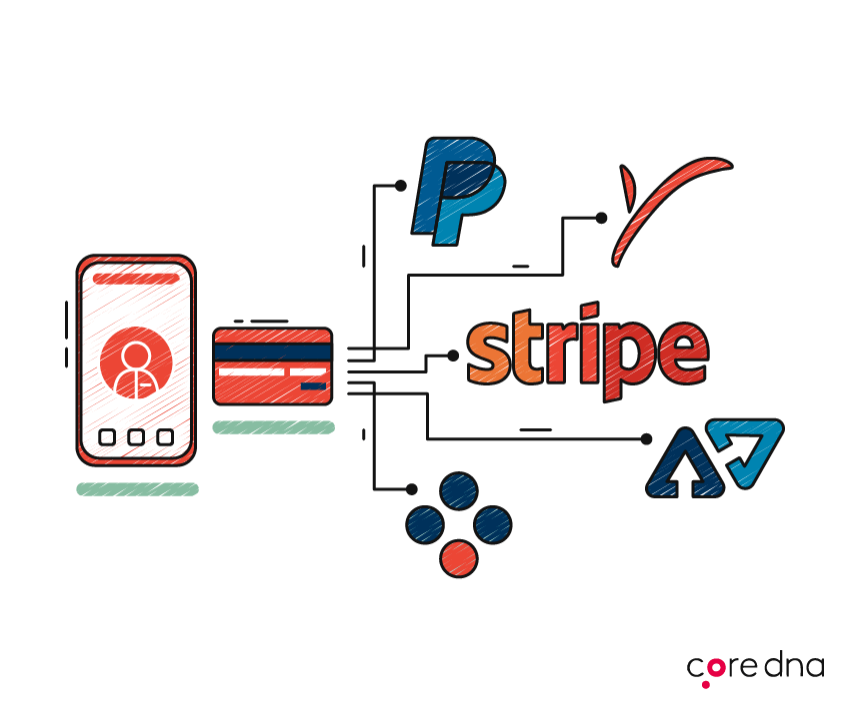
Did you know that: 50% of online shoppers would cancel their purchase if their preferred payment method isn’t available?
Choose the right payment gateway by asking yourself these 3 questions:
1. How does this gateway enhance my user checkout experience (UX)?
Your prospect is wooed by your product and heads to checkout basketed items, it’s safe to assume that you’ve made the sale, right?
Not really.
The journey from deciding to buy and actually checking out and paying is a delicate one. Because “this is great, I want it” can - in a few precious seconds - turn into a frustrated “What it the world, why can’t I make a payment? I haven’t got the time for this” (closes tab and searches for another store).
The right payment gateway choice boosts user experience and conversions by killing unnecessary steps/loading time. Resulting in a smooth, stress-free checkout experience for your customers.
If you choose to integrate PayPal express for Amazon payments, you can auto-populate some of your customers’ information through the gateway’s API, making it closer to a one-click checkout.
2. Does this gateway integrate with my current platform?
Yes, you can integrate a payment gateway that doesn’t have an existing plugin or application for your platform. But expect extreme levels of custom development to make it work. And like an underpowered gaming console running a blockbuster release, this also results in potential glitches and frustratingly jerky reliability. So, make sure your gateway is fully compatible with your current platform.
3. How does this gateway promise to grow with my business?
Your gateway needs to keep pace with the growth of your eCommerce store. It needs to adapt to your customers, their buying behavior, and digital idiosyncrasies.
Research from eMarketer estimates global eCommerce sales hit $4 trillion in 2020. Yet, a large number of eCommerce retailers still fail to get their slice of profit from the global pie; mainly because of complicated logistics and technical hurdles like payment gateways:
Forcing your customers to checkout using your default location currency, or simply not being able to make payments due to gateway compatibility, will kill your international sales.
Recommended payment gateways:
- Braintree: Accept payments online
- Stripe: Payment integration and management
- Authorize: Credit card processing and payment gateway
- PayPal: Accept any forms of payment, in any location
- Amazon Payments: Accept online and mobile payments on your eCommerce site securely
- World Pay:Secure payment services for small and large businesses
Fraud prevention: Why it matters
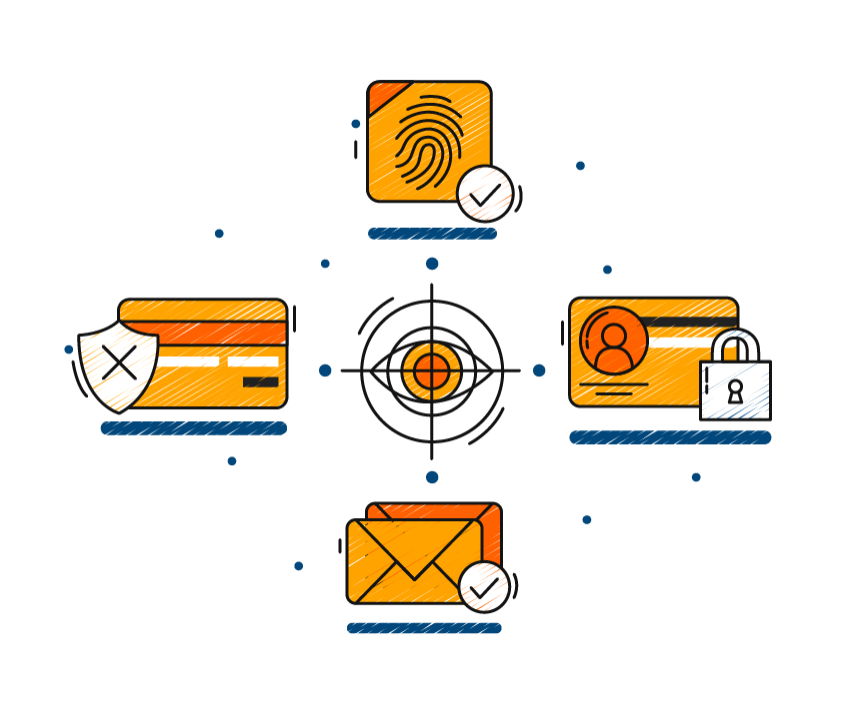
eCommerce merchants love holidays. Unfortunately, so do fraudsters.
Chargeback cheats and organized criminals know you’re busy driving sales, fulfilling orders, and keeping customers happy. So they prey on you not being as vigilant in manually reviewing their orders.
Most online fraud activities can be broadly categorized as:
Account takeover
ntity theft
To help businesses protect themselves and their customers from online fraud, the Payment Card Industry Security Standards Council (PCI SSC) — a forum of global brands including Visa, MasterCard, and American Express — has developed a set of best practices to safeguard consumer data.
Complying with these standards, i.e. PCI compliance, is mandatory for online retailers and is strictly enforced.
Below are a few basic recommendations for maintaining PCI compliance:
1. Monitor transactions and reconcile bank accounts daily
Monitor your accounts and transactions for red flags such as inconsistent billing and shipping information. The physical location of your customers is also noteworthy. Use tools that track customer IP addresses and detect addresses from suspicious countries.
2. Set purchase limits
Based on your order and revenue trends, set limits for the number of purchases and total dollar value you’ll accept from one account in a single day. If someone does want to make an exceptionally large order, have a verification process on standby. Maybe they have to verify their address, or identity via a form, interview, or call.
3. Use the Address Verification System (AVS)
Address Verification Systems compare the numeric parts of the billing address stored on a credit card to the address on file at the credit card company. AVS is included in most payment processing solutions but check with your payment processor to be sure it’s supported.
4. Require the Card Verification Value (CVV)
PCI rules prevent you from storing the CVV along with the credit card number and card owner’s name. That’s why the CVV is so effective. It is virtually impossible for scammers to get it unless they’ve stolen the physical credit card.
5. Get tougher with password requirements
Best practices these days call for at least an eight-character, alphanumeric password that requires at least capital letters and one special character. Customers might grumble, but it’s better safe than hacked.
6. Keep platforms and software up-to-date
Providers continually update software with security patches to shelter you from newly discovered vulnerabilities. So make sure you’re running the latest version of your operating system, as-as well as the latest anti-viruses.
Recommended fraud prevention vendors:
- Signifyd: Guaranteed fraud protection powered by advanced machine learning
- Riskified: Eliminate chargebacks with advanced enterprise eCommerce fraud solution
- Radial: Full-service solution handles every aspect of payments, taxes, and fraud
- Clear Sale: Eliminates fraud before it happens by sorting through orders
Protect customer data with SSL encryptions
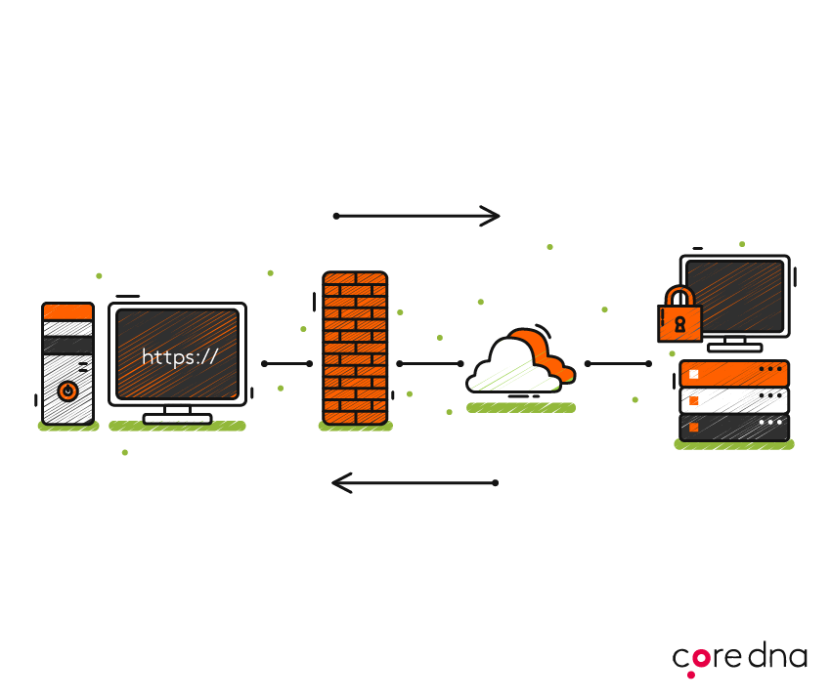
You absolutely need an SSL Certificate. There is no way around it. Here’s why:
Credit card information
Customers are paying through their credit cards and other electronic payment options. It’s your responsibility to protect this information.
Increased conversions
Hacking, identity theft, and online scams have propagated a collective weariness when purchased goods online. Trust is a huge barrier when making purchases online. SSL Certificates squash suspicions, establish a sense of trust and security, resulting in higher conversions.
3rd party payment gateway
In case you use a 3rd party payment platforms like PayPal, you won’t directly need an SSL encryption, but it does act as a trust seal and provides added security when customers make purchases on your site.
Login forms
Websites asking for login forms (usernames and password) require an SSL encryption so that a third party isn’t able to impersonate the user.
Recommended SSL providers:
- Comodo: High-level 2048-bit encryption and 99.9% browsers compatibility
- Symantec: Encrypted data across all devices, formerly VeriSign
- GlobalSign: SSL, digital certificates & identity management
- Digicert: Unlimited servers SSL certificates
- Entrust: Organization or Extended Validation identity (opposed to domain validated) and conform to SHA-2 encryption standards.
Back-end infrastructure
In their pursuit to drum up more business, store owners will obsess over product images, pick and prod at website design, and sweat over product descriptions and headlines. All those actions play an important role in lifting conversions. But there are two powerfully simple elements that get neglected…
Loading speed and infrastructure.
They may seem trivial but are capable of having a meteor-like impact on your conversions. Pages that load faster have better engagement, stronger conversions, a friendlier user experience, and better search engine rankings. Research about loading speed and conversions has been shocking. It shows that:
Sites with 3 second load times get 22% fewer page views, 22% lower conversions and a 50% higher bounce rate than sites with 1 second load times.
And sites with 5 second load times are worse. They get 35% fewer page views, a 105% higher bounce rate and 35% fewer conversions.
So, “if your eCommerce store generates $100,000 per day, you could lose up to $2.5 million in sales every year for just a 1-second page delay.” Create explosively fast loading speeds and tight infrastructure by:
1. Reducing HTTP requests
You know how your Wi-Fi screeches to a snail's pace when there are multiple users on the same network? Well, that sort of what happens when your site has to manage a flurry of HTTP requests. The more requests your site makes, the slower it loads.
To quickly boost your loading speed, simply strip away unnecessary scripts, plugins, and widgets that aren’t central to the running of your store. This one step alone can have a shocking impact on your loading speed.
2. Reduce bandwidth burden with Gzip files
The bigger your files, the longer they’ll take to load. This is where Gzip compression comes in.
It allows you to effectively budget your bandwidth, and speed up your site by compressing files on your website. So instead of sending 100KB of data, the file can be compressed to 10KB, then passed from the server to the browser and then re-opened.
3. Upgrade to a faster hosting
If you want the optimum loading speed for your eCommerce store, you might need to switch to hosting that’s either:
VPS (shared) hosting
- SSD cloud hosting
The difference?
A VPS is a budget-friendly option, it allocates a specified amount of computing resources to each client. If server activity spikes, the system might not be able to handle the additional inflow and can slow down, or (in extreme cases) crash.
If you want reliability and powerful functionality, then SSD cloud hosting is a more costly, but reliable choice. With SSD cloud hosting, websites are hosted on a network of united resources. Which means if one server is reaching its optimum level, then a second server is ready to cover. If a server fails, the website will still be running as other servers will continue to serve incoming traffic.
4. Use a Content Delivery Network (CDN)
Image Source
Chances are you’re going to be attracting traffic to your eCommerce store from across the globe. To improve speed and experience for international visitors, a Content Delivery Network (CDN) is essential.
A CDN places servers between the person browsing, and your website. Storing caches locally so that your website is presented much faster.
So, if your main website is hosted in the US and someone from the UK views it, they’ll be presented the copy that - in a network aspect, not geographical - is closest to them.
Recommended infrastructure providers:
- Amazon AWS: Pay only what you use cloud computing
- Rackspace: Managed & dedicated cloud computing
- DigitalOcean: Simple cloud computing platform, designed for developers
- Linode: SSD Linux servers for your infrastructure needs
- Heroku: Platform as a service (PaaS) that enables developers to build, run, and operate applications entirely in the cloud.
Chapter 4
eCommerce Organization
Efficient organization marks the difference between a successful store and one on the road to diminishing sales and subsequent failure.
Keeping the mechanics that turn your eCommerce store well-oiled is crucial. You can’t increase sales, fulfill orders at max capacity, and amplify marketing if you’re operating from a weak, rusty base.
Some areas of focus for a robust eCommerce base are:
Optimizing existing operations

The explosion of eCommerce and digital marketing bleeds deep into any business, whether a B2C or B2B.
Take the role of B2B salespeople for example; previously, B2B salespeople would spend their time checking in with customers, maintaining relationships, and collecting orders. But eCommerce has turned this into an independent process.
In fact, “Death of a (B2B) Salesman” by Forrester e-business analyst Andy Hoar, projects that 1 million sales reps, or 22% of the 4.5 million B2B sales agents now in the United States, will lose their jobs to eCommerce by 2020.
With B2B becoming digitized, the bulk of the buying decision is made beforehand.
Buyers aren’t calling up to inquire about product/services, they’ve browsed your website, your competitor’s site, checked multiple reviews - they have a good idea of whether they want to order or not before they interact; diminishing the role of traditional B2B.
Research shows that nowadays 82% of buyers state their purchase decision has been significantly affected by a vendor’s social content and about 84% use referrals and peer recommendations to verify their decision.
Understanding this, you can:
1. Carve out your value proposition and let it seep through all customer contact point
Because even your competition will have information that talks about what they offer, it’s how you do things differently that separates you from the pack and draws leads.
2. Thoroughly understand your leads
Accurate customer personas are important here because whether you like it or not, your website and online image are what bears the brunt of the “selling”. So you need to ensure copy, products, and information are targeted towards select buyers that make up the bulk of your market. But to do this effectively, you need stop relying solely on demographics.
Instead, dig deeper with data-backed demographics and more importantly - psychographic profiling established from surveys, analytics, interviews, and your sales team. Why?
Because like we mentioned in our post on eCommerce personalization, the deep-rooted motivation behind why John Doe and Dave Smith visit your eCommerce store is far more important than the fact that John works at an office, and David drives a taxi.
3. Use brand-centric marketing that magnetizes your brand and builds strong relationships
Garner reviews, get recommendations from influencers and solidify your authority to boost credibility and breed a sense of trust and familiarity by:
- Incentivizing customers to leave feedback
- Creating valuable content that actually solves pains and problems
- Connect and cross-promote with influencers in your market
- Provide all-around solid customer service. This means rapid response times, quick solutions, and over-delivering value.
Magnifying profits by measuring your margins
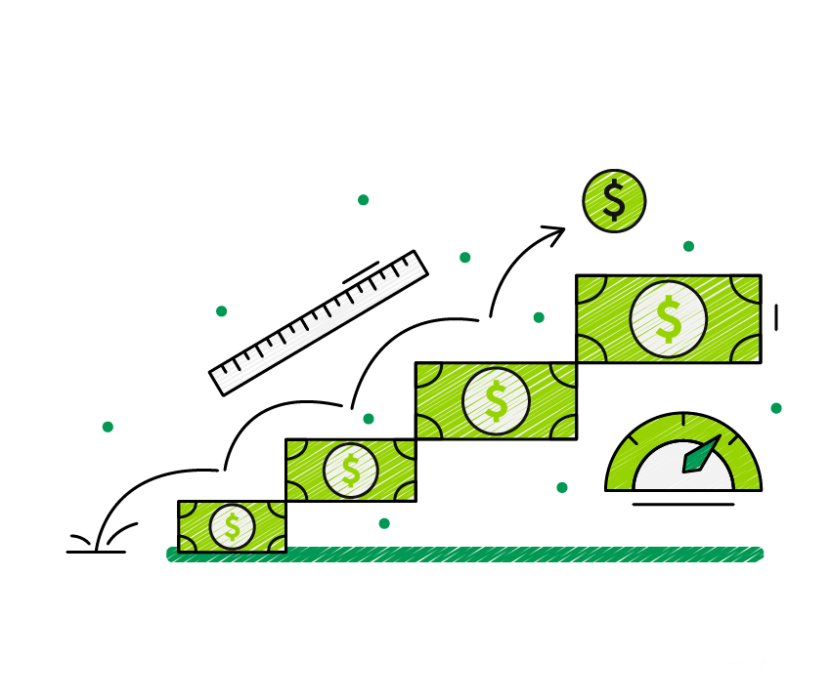
Running a digital store is (arguably) easier to organize and measure. Especially with swaths of data just keystrokes away.
But an online store comes with its own unique costs, hosting, technical IT assistance, website design, and a host of other variable factors. Further stressing the importance of accurately tracking the right metrics (featured below) to understand your margins:
Customer churn
This is the number of customers you lose in a certain time period. Simply put, it is how many customers stop paying for your product or service in a given period of time.
Cost Of Goods Sold (COGS)
COGS is the is the total of all costs used to create a product or service, which has been sold.
Operating costs
Operating costs include sales & marketing, overhead, payroll, travel expenses, etc. Essentially, these are the costs associated with running your business.
Gross margin
Gross margin is the amount of money you make per product sold. It’s determined by calculating the difference between the cost to make or buy a product and the online selling price.
For example, if you sell a product for $20.00 and it cost you $10.00 to make, you’ve made a gross profit of $10.00. So your gross margin would be 50%.
Gross Margin = Sales - Cost of Goods Sold
Customer Lifetime Value (LTV)
Customer Lifetime Value simply measures the profit your business makes from any given customer. Knowing your LTV will help answer pivotal questions like:
- How much can I afford to spend acquiring a new customer?
- How much can I spend on retaining customers and reducing churn?
- What upsells and cross-sells can be given to the best customers?
You need the following three variables to get your customer lifetime value:
- ARPA (Average Revenue per Customer)
- Gross margin
- Churn/loss of custom (if applicable)
Take the revenue you earn from a customer, subtract the money spent on acquiring and serving them, and see how long they generate profit before churning.
LTV = ARPA * % Gross Margin / % Churn Rate
Customer Acquisition Cost (CAC)
Acquiring new customers can be costly, and that’s why tracking CAC is a must. Because pumping hard-earned money into a marketing channel with negative returns will kill your eCommerce store.
CAC refers to the resources that a store uses in order to acquire an additional customer. It includes all efforts necessary to get your products and services into the hands of potential customers, and then convincing them to buy.
Common acquisition expenses are paid ads, staff salaries, CRM, marketing automation, software licenses, sponsorships, content marketing, and social media.
Knowing your CAC will help you:
- Determine your actual profit margins
- Optimize customer Lifetime Value
- Identify and reduce the costliest acquisition expenses
To calculate your CAC, take your total sales and marketing expenses over a given period of time; then divide by the number of new customers acquired in the same period.
Strengthening your store with hiring the right staff
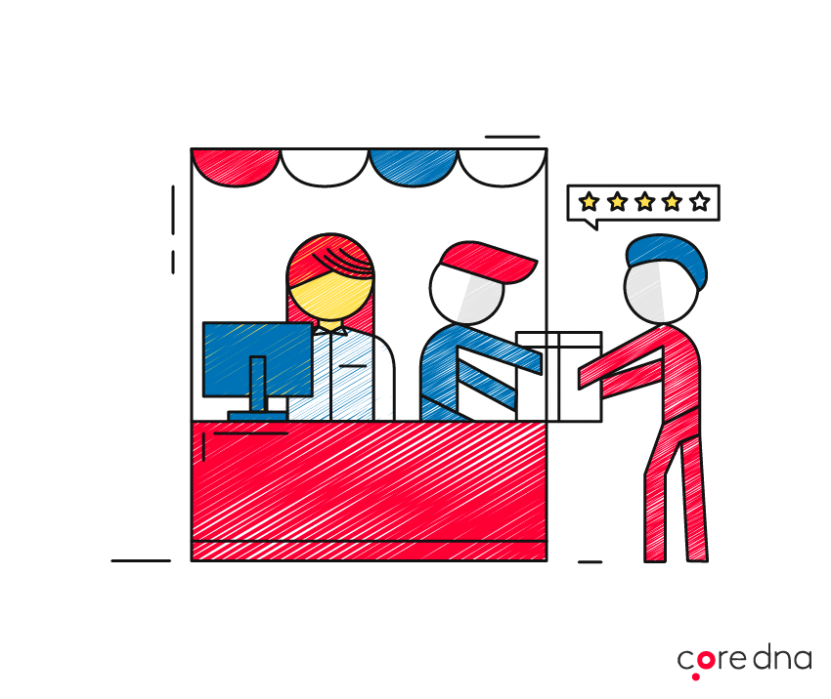
As we’ve mentioned before, the rapid rise of eCommerce sowed seeds for a whole new category of jobs. While traditional jobs like B2C/B2B rep roles have regressed, there’s a surge of jobs that basically never existed nearly two decades ago, such as:
VP of growth
Or “growth hacker” is your right-hand man/woman for everything marketing. The marketing equivalent of a walking swiss army knife; growth hackers are versed in various marketing disciplines. And are usually heavily involved with content, outreach, conversions, A/B tests, and managing other marketing staff to help you drive more sales.
Content managers
Either staff or third party content producers hired to create valuable content that builds relationships and credibility, attracts an audience and boosts traffic.
Social media managers
Your go-to for maintaining a consistent brand image on social media platforms
Conversion rate optimizers
Specializing in boosting ROI for every lead/customer that visits your store by running technical, comparative tests throughout your website.
User experience or interface specialists
From homepage to checkout, user experience designers aim to streamline on-page interaction to increase lead engagement and keep customers happy.
For example, you have tons of traffic and have ample leads on site, but they aren’t buying. You might want to regroup your efforts to enhance conversions and UX. If you feel you need a firmer grasp on your profits/margins, bring in the number crunchers.
Keeping positive cashflow
82% of businesses fail due to poor cash flow management.
If there’s a single factor that decides whether your eCommerce store sinks or swims, it’s cash flow.
Things like marketing, demand, and logistics, are the muscles and bone of your business. But regardless of how strong your muscles and bones, you won’t survive without blood being pumped into/around them. Similarly, cash flow is the lifeblood of your eCommerce store.
Its absence eradicates the possibility of anything else functioning.
Despite high margins and plentiful profits, struggling to fulfill financial obligations can cripple a business. On the contrary, a business that’s got air-tight cash flow can still be unprofitable, or barely scrape by.
Your groundbreaking marketing strategy, your new split test ideas, your innovative fulfillment process, your new product line; cue the cheesy music - because without cash on hand to enable implementation of these ideas, you’re frozen with distant dreams while stranded on a sinking ship.
It’s tempting to think that growth = profitability, which = success. But just like the human body, growth comes knocking with its own demands and “growing pains”, and they often become damaging if not satisfied.
If demand for your product soars, so will sales. This creates a chain reaction where you need to:
- Pay for extra inventory
- Cater for higher volume of shipping and fulfillment
- Hire staff to help with fulfillment
- Process slightly more refunds and returns
- Hire extra staff to cater all the sales and customers queries
All these things cost cash, and without cashflow, your store doesn’t have the necessary cash to support sustained growth. Best case scenario? You fail to grow and anger customers, racking up debt along the way; the noose on your cash flow tightening further. Worst case? You cause permanent damage to your brand, kill your eCommerce store, and get buried in debt.
To improve your cash flow:
1. Nurture current customers
The profit made off a new/current customer might be equal, but with regards to cash flow, the profit made from current customers is superior - because it doesn’t necessitate spending cash.
With existing customers, the more profits you make, the less your expenditure to generate said profits.
Tracking and improving LTV - Lifetime Customer Value - is a great place to start for improving profit from current customers. However, around 58% of businesses are slacking when it comes improving their customers LTV. LTV is a solid base for understanding how much cash you’re able to invest per customer and what returns to expect. Some solid practices for boosting LTV are:
- Implement cross-selling and upselling effectively
- Crank up your email marketing with segmented email campaigns
- Bundle similar products together to increase consumption
- Offer special discounts and rewards for higher shopping cart values
2. Use analytics to refine your spending
For airtight cash flow, you need to make data-driven decisions that make logical sense. This means peeking behind the digital curtains to inform a cash flow budget.
You want to use data to answer questions like:
- How many people are actually converting?
- At your current pace of growth, how much cash do you need on standby each week/month/
- If demand was to soar unexpectedly, do you have enough cash reserves to facilitate that growth and feed your business?
- What’s your cost per lead, how can it be reduced?
3. Monitor how returns impact your bottom line
22% of brick and mortar retailers avoiding selling online due to costs of managing delivery and returns.
And at least 30% of all products ordered online are returned compared to only 8.89% bought in brick-and-mortar shops. Scary statistics for eCommerce store owners. But the erosion of profits caused by out of control returns is even scarier.
When an item is returned, not only do you lose the profit made on the sale, and incur costs covering returns, you also risk losing that customer’s business permanently. Adhering to a convenient and friendly return process (we’ll talk about this later) will improve customer satisfaction, reduce returns, and preserve your cash reserves.
Product development: Expand your catalog

The internet’s far-reaching impact has destroyed geographical selling barriers.
Products have the potential to reach millions. But like any organism in a dynamic environment, evolution and adaptation are crucial. In similar fashion, at some point, you’ll need to expand your existing store products or develop new ones to satiate emerging market demands.
Having an online presence accelerates this process. Letting you find or create winning products, then enabling you to test the waters before investing or occupying inventory space by:
1. Using your list to gather info
Whether it’s sending a survey, or a simple yes or no question, or even blasting out a pre-order campaign, email gives you access to highly accurate feedback based on your current pool of customers. But what type of information is to be gathered from customers to fuel and validate product development?
Below are the lines of questioning to following:
- In their own words, what does your current product help customers achieve?
- If they had a magic wand to solve one big problem/pain, what would it be?
- What competing products do they purchase in your market that aims to address the same issue as your product?
- Why do they choose them as well as your product?
- How can your existing product be improved?
- What features do they dislike about your existing product?
- If you were to offer “XYZ” product, would they purchase it now?
2. Driving traffic to Kickstarter/crowdfunding
By using sites like Kickstarter, you get to validate demand and mitigate startup costs for a new product.
This is what Michael Gerber of Comfortable Boxers did to raise $142k in just 30 days with 2000 paying customers. Driving free and paid traffic to his Kickstarter campaign allowed him to reach over 570% of the fundraising goal, and more importantly, validate his idea with minimal risk.
3. Interacting with customers on social media
Reaching out and talking to your top customers, or gauging response to social media posts about a new product line/type can indicate demand.
And not only does monitoring social media accounts for reviews/feedback give you insight into how “hot” or “cold” your customers are, it also reveals your competitor’s customer satisfaction levels.
4. Harness the power of “ghetto” pre-orders
Is it possible to validate a profitable product with just $200 in 14 days?
Ask most eCommerce store owners this question and the answer is “probably not”. But it’s been done.
Justin Mares used a “ghetto” validation process to launch his now 6 figure bone broth business, Kettle and Fire. Here’s a super concise breakdown of his journey and what you can learn from it:
- Justin didn’t have an existing list of customers (or health nuts as they’re called on the Kettle and Broth website). Keywords and search trends were his go-to’s for checking if people were interested in Bone Broth.
- This qualified further digging, leading him to keywords planner on Google for the same Keyword (Bone Broth).
- After validating an actual market for the product, Justin got more specific with who was actually looking for the product by scouring forums and reddit. The aim is to see which communities were searching for Bone Broth. He found they were primarily vegan and superfood enthusiasts.
- Justin validated the market and identified specific demographics for his customers. Now for the ultimate test: were people willing to pay for Bone Broth? To answer this, a simple landing page was created with an order button.
- Justin then used a cheaper form of paid ads to drive traffic, Bing Ads, to the page. Resulting in over 7,000 visitors in with just $50 ad spend. The best thing? 30% of them ordered, resulting in $500 in pre-orders alone.
- Once people ordered he emailed them to inform them the product wasn’t ready. He offered a refund, or a discount when the product was released. A smart move, this way no customers were angered and he was able to receive payment for his pre-orders from eager customers.
Product returns: Don’t let this be your Achilles heel

Consumers return almost 30% of eCommerce orders online, and over 90% are more likely to repeat purchase if returns are easy.
Returns are even worse for specific eCommerce categories:
- 20% of apparel and soft goods are returned
- 50% of expensive items purchased online are returned
Your returns process can make or break your customer satisfaction. It’s the deciding factor in whether or not unsatisfied customers remain loyal because you’ve treated them right, or leave because they feel cheated and disappointed with their purchase.
Take Zappos for example, their entire USP is their insanely generous return policy that hooks customers and keeps people coming back.
A solid returns policy will boost customer loyalty, reduce returns, and lift your conversions. Follow the steps below to craft your own profit-boosting return policy.
1. Prevent returns from happening in the first place
Guess who’s at fault when products are returned?
Nope, it’s not the customer.
It’s mostly the retailer’s fault. A 2008 Forrester study, which was conducted on behalf of UPS, found that eCommerce returns were the retailer’s fault in 65% of all cases.The study found that:
- 23% of returns are due to the wrong item being shipped.
- 22% of returns are due to the difference in product appearance.
- 20% of returns are due to a damaged item being received.
Pre-emptively address these issues by:
- Ensuring that fulfillment double checks product
- Your images, pictures, or videos accurately reflect and resemble the physical product. It’s proven that a lack of relevance or contradicting a customer’s expectations kills conversions and plummets customer satisfaction.
- Take extra care with delicate items to ensure they’re not damaged during delivery
2. Use a simple returns process to boost sales
Zappos was one of the first to offer a generous 365-day, free two-way shipping and return policy that practically invited customers to order shoes, and return them if they weren’t 100% satisfied.
This kind returns policy has marked them as a dominant retailer of shoes online and plays a pivotal role in encouraging customers to buy because there’s absolutely no risk involved on the customer’s end.
Does this mean you need to offer super generous return policies? Of course not, but you should take heed and remove the burden of risk from the return process.
The more you let the customer know that you’re shouldering the burden, the more comfortable they’ll be ordering from you. Sure, you’ll incur costs by offering free return shipping, but research shows the long-term benefits of free-return shipping outweigh the short-term costs.
For one retailer, free return shipping boosted sales by 357%:
"
Using surveys and spending data, researchers tracked the habits of customers over 49 months at two leading online retailers. After a free-return shipping policy was instituted at one of the retailers, average spending per customer increased by $620 over two years. At the other, it went up $2,500.
So, free returns might cost you a little more, but profits made from higher conversions and happier customers will reimburse those costs and inspire long-term loyalty. But guess what’s prevalent with generous reward policies?
Higher return rates. Especially from the subset of customers called “serial returners” or “wardrobers”.
The digital equivalent of “tire kickers”, these are the type of customers who frequent car dealership, test drive numerous cars, and don’t buy. They’re just trying things out and are tempted by generous return policies. You’re most likely going to encounter them if you go down the generous returns policy route, so beware.
Actionable takeaways: You could charge for, or simply make it harder to return items. But that will eventually cost you more profits than its saves. So how do you reduce returns without repelling customers?- Make your return policy a prominent page feature: Don’t tuck your returns policy away like you have something to hide. Feature it prominently on every page and make it clear that you’re comfortable with returns.
- Use a return center: Having a separate team or return department can be an awesome way to streamline the return process. And it projects a professional image. If possible, do it.
- Give ample time for returns: It might seem like this results in more returns, but paradoxically, this can increase sales and actually reduce returns by providing customers with confidence in your product, and again, mitigating risk on their behalf.
Want to save this for later? Download the PDF of this guide

